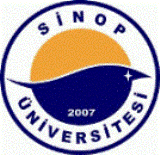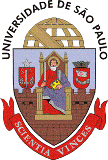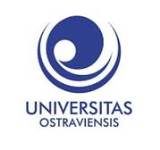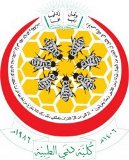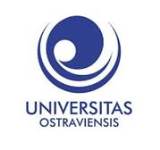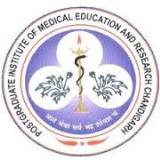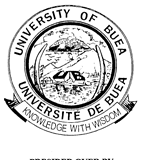Day 3 :
Keynote Forum
Hassan K Bassiouny
Alexandria University, Egypt
Keynote: Validity of polymerase chain reaction (PCR) versus coproscopic examination for diagnosing infection with Schistosoma mansoni in low intensity endemic area in Egypt
Time : 09:30-09:55

Biography:
Hassan K Bassiouny completed the Dr. PH degree at the age of 29 years from High Institute of Public Health (HIPH), Alexandria University, Egypt. He is a Professor of Medical Parasitology, Tropical Health Dept., HIPH and Former Dean of the HIPH for 3 years. He has published more than 60 papers in reputed journals and has been serving as an Editorial Board Member of reputed journals as EMHJ (WHO), Saudi Medical Journal (SMJ), Bulletin of the HIPH. In addition, he supervised more than 40 Master and Doctorate degrees in the field of Medical Parasitology and Tropical Medicine.
Abstract:
Introduction: Egypt is one of the most highly endemic countries with localized transmission foci of schistosomiasis, re-infection is continuing problem in rural areas due to lack of improvement in sanitation conditions.
Aim of work: This study assessed the validity of conventional PCR (cPCR) versus coproscopic techniques as gold-standard for diagnosing of S. mansoni infection in low intensity endemic area in Kafr El-Sheikh governorate, Egypt.
Methodology: It was a cross-sectional study. The study examined faecal samples of 120 primary schoolchildren [74 (61.7%) males and 46 (38.3%) females] with mean age 10.16±0.798 years (range: 9-12 years). Three fresh stool samples were collected on three consecutive days from each study subject and examined by FECS (3 slides from one fecal sample of the first day), Kato-Katz (10 slides from 3 fecal samples on 3 consecutive days- 6 slides on the first day and 2 slides on 2nd and 3rd days samples respectively) and cPCR (one sample of the fecal specimen of the first day).
Results: The prevalence S. mansoni infection was 40.0%, 69.2% and 80.8% by the three techniques respectively. All infected cases were of low intensity of infection. The Kappa index and diagnostic parameters showed a good diagnostic value of cPCR as compared to coproscopic examination.
Conclusion: cPCR demonstrated a good diagnostic performance for the detection of S. mansoni in low intensity endemic area versus coproscopic examination as gold-standard.
- Track 1: Parasitology: Overview
Track 2: Medical Parasitology
Track 3: Animal Modelling & Veterinary Parasitology

Chair
Geoff Hide
University of Salford, UK

Co-Chair
Luiz Euribel Prestes Carneiro
Oeste Paulista University, Brazil
Session Introduction
Luiz Euribel Prestes-Carneiro
Oeste Paulista University, Brazil
Title: The role of environment in the spreading of Visceral Leishmaniasis in western Sao Paulo, Brazil
Time : 11:00-11:20

Biography:
Luiz Euribel Prestes-Carneiro was born in Paraná State, Brazil. He graduated with a degree in Pharmacy and Biochemistry by the State University of Ponta Grossa, and Medicine by the University of Oeste Paulista, Sao Paulo. In 1999 he obtained his Master’s degree in Molecular and Cellular Biology at Maringa State University, and in 2003 his PhD degree in Immunology at São Paulo University, São Paulo. He did his Residency course in Infectious Diseases at the Ipiranga Hospital, Sao Paulo. Since 1995 he has been a professor at the Immunology Department, an institutional researcher, and a professor of the Environment Master’s course at Oeste Paulista University, Presidente Prudente, Sao Paulo. He is part of the editorial board of 2 Brazilian Scientific Journals, 4 International Scientific Journals and reviews for many other journals. He has published 20 papers in peer reviewed journals. At present he works in infectious diseases and immunodeficiencies clinics of two public hospitals in Presidente Prudente, Sao Paulo. Currently Dr. Prestes-Carneiro’s researches are focused on the epidemiological and immunological aspects of HIV, Viral Hepatitis, Visceral leishmaniasis and Immunodeficiencies.
Abstract:
Brazil harbors 90% of the Visceral Leishmaniasis (VL) reported cases in Latin America. We described the role of environment in the fast and worrying spread of VL in western Sao Paulo state, Brazil. Coming to Brazil from Bolivia through the Novoeste railway, Marechal Rondon highway (SP-300) and Bolivia-Brazil pipeline construction (GASBOL), the disease arrived at the border of the west region in 2006 through Mato Grosso do Sul (MS) state. We hypothesize that the primary axis of VL dissemination through the west was the SP-563 highway, coming from endemic regions of MS and throughout the whole region, crowded of small and middle cities and connected by a large number of highways (1,480 miles). By 2013, from the 45 municipalities that comprise the region, 30 (66.7%), has reported the sand-fly, 18 (40%), canine leishmaniasis and 14 (31.1%), human VL, 348 human reported cases and 19 deaths (2005-2013). It is considered the poorest region of the state with sandy/dry soil in the winter and rainy/wet soil in the summer, with increasing temperatures in the last decades. Nevertheless, the framework of VL dissemination could be aggravated by the extensive amount of watersheds flowing into Paraná, Paranapanema and Tietê, the three biggest rivers of southwestern and southern Brazil, with nine big lakes and a flooded area of 2,384 square miles, supporting nine hydroelectric plants and bridges. Poverty, tropical climate, extensive highway network, artificial big lakes linking endemic regions may endorse environment factors related to the spreading of VL in western Sao Paulo state.
Sonia AlmerÃa
Universitat Autònoma de Barcelona, Spain
Title: Bovine Neosporosis. Epidemiology and markers of risk of abortion from a clinical perspective
Time : 11:20-11:40

Biography:
Sonia Almería, D.V.M., Ph.D., obtained both D.V.M and and Ph.D. degrees at the Veterinary School of the University of Zaragoza, Spain. She completed postdoctoral fellowship training in immunoparasitology at the Agriculture Research Service (ARS), USDA, in Beltsville, MD, USA. She is an Associate Professor of Parasitology in the Veterinary School of the Autonomous University of Barcelona (UAB) and a Research Associate in the Center for Research in Animal Health (CReSA-IRTA) in Barcelona, in Spain. She has published more than 80papers in reputed journals and has been serving as an editorial board member of Research in Veterinary Science since 2010.
Abstract:
Neospora caninum is a protozoan parasite closely related to Toxoplasma gondii with a wide host range but with a preference for cattle and dogs. Since the description of N. caninum as a new genus and species in 1988, bovine neosporosis has become a disease of international concern as it is today a leading cause of abortion in cattle worldwide, yet it remains unclear why not all infected cows abort. At present there is no effective treatment or vaccine. Epidemiological and clinical data from the cattle herds need to be considered. Importantly, the selective use of semen from beef breeds, mainly Limousin, in seropositive dairy cows has been linked to a very low incidence of abortion. This has an important practical aspect which not only reduces the risk of replacements from Neospora-infected heifers, but also reduces the risk of abortion. In order to increase the sensitivity of a positive diagnosis of N. caninum-associated abortion, the use of more than one technique is recommended. The markers used to diagnose the disease and, more importantly, to assess the risk of abortion in infected cows, including those based on specific antibodies, antibody titers and antibody subtypes, along with cellular immunological markers, hormones and other pregnancy-related proteins will be described. The identification of parasite molecules specific to aborting cows could provide insight into mechanisms of parasite-associated abortion and help control this devastating disease. The final result of our bovine neosporosis control programs has been an acceptably reduced effect on the abortion rate from this disease.
Stefaan Kurvers
Zuyderland Medical Centre, The Netherlands
Title: Strongyloides stercoralis, a silent killer- A case-report
Time : 11:40-12:00

Biography:
Stefaan Kurvers has completed his Bachelor at the age of 20 years from Hogeschool Zyud at Heerlen, The Netherlands. He is a lab-technician microbiology and coordinating lab-technician parasitology at Zuyderland Medical Centre, The Netherlands. He is a member of the Dutch Society of Parasitology.
Abstract:
A 57 year old male patient suffering from non-Hodgkin lymphoma (NHL) was hospitalised due to general weakness and abdominal complaints. Symptoms included headache, diarrhoea, vomiting, nausea and fever. Primarily the attending physician suspected deterioration due to NHL. However, extensive diagnostic examinations showed no cause for his abdominal complaints. Finally, at day 14 a gastroscopy was performed showing two ulcerative lesions (one in the fundus, one in the cardium) from which biopsies were taken and sent to the pathology department. These biopsies showed a pronounced eosinophilia and the presence of worm/larvae like structures upon which the department of Medical Microbiology was consulted. On suspicion of a Strongyloides stercoralis infection, stool samples were collected two days after the biopsy and examined for parasites. Larvae of Strongyloides stercoralis were found. Unfortunately, before the parasitological diagnosis was made, the patient deteriorated. He was admitted to the intensive care unit where mechanical ventilation, ivermectin and broad-spectrum antibiotics were started. One day after the diagnosis was confirmed the patient died of septicaemia combined with massive bleeding from the stomach ulcera. In retrospect the patient was originally from Liberia, during his treatment for NHL with chemotherapeutic agents strongyloides serology was never performed. One month previous to this final hospital admission he had also been admitted with respiratory and abdominal complaints which were treated with broad spectrum antibiotics and prednisone. Furthermore his medical history revealed type II diabetes, chronic hepatitis B infection.
Conclusion: Hyperinfection with Strongyloides stercoralis.
Geoff Hide
University of Salford, UK
Title: Does vertical transmission play a role in the generating the high prevalence and ubiquity of Toxoplasma gondii in natural populations of humans and animals?
Time : 12:00-12:20

Biography:
Professor Geoff Hide is currently Professor of Parasitology at the University of Salford in the UK. He received his Ph.D. degree in Molecular Parasitology from the University of Edinburgh (1988) and conducted postdoctoral research at the Wellcome Trust Centre for Molecular Parasitology at the University of Glasgow.
Abstract:
With a ubiquitous dispersion and high prevalence in natural populations of animals and humans, the distribution of the parasite Toxoplasma gondii is puzzling. Despite the cat being the only definitive host, Toxoplasma is found in most geographical areas and all warm blooded animals. Three routes of transmission are typically recognised: ingestion of oocysts shed by the cat, carnivory and congenital transmission. The relative importance of these routes is poorly understood in natural populations. These studies aim to assess the contribution of congenital/vertical transmission to these processes. Using PCR detection of the parasite in foetuses, overall congenital transmission rates in natural populations of infected mice were found to be high (Mus domesticus, 100%; Apodemus sylvaticus, 100%). Studies in lambs, using PCR detection of Toxoplasma in umbilical cord tissue at birth, showed that congenital transmission occurred in 69% of pregnancies. Infection and abortion in families of pedigree sheep from the same farm was investigated to test the hypothesis if vertical transmission: if infection occurred by ingestion of oocysts, a random distribution of infection across families would be expected. We found highly significantly different prevalences of Toxoplasma infection (P<0.01) and abortion (P<0.01) in different families. Furthermore, analysis of pedigrees suggested serial congenital infection from some infected ewes. In humans, we found 9.93% congenital transmission rates using PCR amplification of parasite DNA from umbilical cord. This is much higher than previously published data. However, this study, showed no link between infection and miscarriage in humans. We propose that vertical transmission may be much more important than previously thought, may contribute to the high prevalences seen in natural populations of mammals (including humans) and deserves further consideration.
Weidong Peng
Nanchang University, China
Title: Pig Ascaris: An important source of human ascariasis in China

Biography:
Prof Weidong Peng, completed his MD in 1983 from Jiangxi Medical College, China and postdoctoral researches at University of Glasgow, UK. He has published more than 60 papers in international reputed journals and in Chinese national academic journals.
Abstract:
The aim of the present study is to detect the frequency and distribution of cross infection and hybridization of human and pig Ascaris in China. Twenty high polymorphic microsatellite loci were selected to screen 258 Ascaris worms from humans and pigs from 6 provinces in China. The software programs STRUCTURE, BAPS and NEWHYBRIDS were used to determine the case of cross infection and hybridization of human and pig Ascaris. Results showed that cross infection was detected in all sampled locations and of the total 20 cross infection cases, 19 were identified as human infections by pure-bred pig type Ascaris in contrast to only one case of pig infection by pure-bred human type Ascaris. Similar to the findings in cross infection, hybrid Ascaris was also detected in all locations and both host species and most of hybrids (95%) were detected from human host. The distribution of cross infection and hybrids showed significant difference between the two host species and among three categories of genotype in terms of G1, G2 and G3, and also between the south and north regions (for hybrids only). The results strongly suggest pig Ascaris as an important source of human ascariasis in endemic area where both human and pig Ascaris exist. In consideration of current control measures for human ascariasis targeting only infected people, it is urgently needed to revise current control measures by adding a simultaneous treatment to infected pigs in the sympatric endemics. The results are important for public health, and enlightening on the understanding of genetic evolution, taxonomy and molecular epidemiology of Ascaris.
Zhong-Dao Wu
Sun Yat-sen University, China
Title: The pathogenesis of optic neuritis caused by Angiostrongylus cantonensis in SD rats and BALB/c mice

Biography:
Zhong-Dao Wu has completed his PhD in 1997 in the Nanjing Medical University in China and master studies at the Jiangxi Medical Collage in China. He is a Full-Professor and the Chief of Department of Parasitology, Zhongshan School of Medicine in Sun Yat-sen University. He has published more than 40 papers in reputed journals.
Abstract:
It has been documented that infection with Angiostrongyliasis cantonensis can cause optic neuritis and lead to serious vision sequela however no systematic studies have been conducted in this area. We applied rats and mice with A. cantonensis infection as animal model to study the pathogenesis of optic neuritis caused by the infection. The SD rats and BALB/c mice were infected AC for 7d, 14d and 21d, respectively, then histological examination of retina and optic nerve, ophthalmoscope and ERG, VEP of experimental animals were applied. After that, dexamethasone combining with albendazole and tribendimidine (TBD) was used to treat the optic neuritis in rats and mice caused by AC respectively, and the therapy effects were evaluated. Our results showed obvious eosinophils (EOS) infiltration appeared in retina and optic nerve adventitia followed with obvious optic nerve fibers demyelination, retina ganglion cells swelling even death in infected rats and mice when applying histology observation. Moreover, optic disk of experimental rats appears hyperemia, retina vein became thicken and VEP latency prolonged; mice showed prolonged VEP latency and decreased ERG amplitude. In therapy process, the results showed dexamethasone combining with albendazole had no obvious effect to prevent progressive visual deterioration for optic neuritis caused by A. cantonensis in rats; tribendimidine can alleviate retinal and optic nerve inflammation, but can not improve VEP latency and ERG amplitude. Above results provided evidence that A. cantonensis really can cause optic neuritis and appear optic nerve demyelination and ganglion cell damaged with EOS infiltration and current therapy method have no distinct effect on vision recovery, which suggests us take consideration of protecting and nourishing optic nerve and ganglion cells in time to avoid of their in secondary injury may be necessary when treating infected patients. This measure may lessen serious ocular region sequela such as hypopsia even loss of vision.
Hanem F. Khater
Benha University, Egypt
Title: Efficacy of synbiotic and diclazuril and their combination on the performance of broilers infected with Eimeria acervulina
Time : 12:20-12:40

Biography:
Hanem Khater is the Professor of Parasitology in Benha University, Egypt. She completed her doctoral degree at the Department of Entomology, College of Agriculture, food and Natural resources, University of Missouri- Columbia, USA. Her research mainly focused on natural control of arthropods of medical and veterinary importance such as mosquitoes, house flies, lice, green bottle fly, camel nasal botfly, soft and hard ticks, and mite to avoid environmental pollution with pesticides as well as control of several parasites using safe and natural materials to avoid drug resistances and environmental contamination.
Abstract:
The efficacy of synbiotic (a combination of probiotic and prebiotic) with and without diclazuril on Eimeria acervulina on growth and associated biochemical variables was investigated in broiler chickens. One-day-old chicks were divided into 5 equal groups (Gps) of 30 chicks each. Gp 1, negative control, was not infected and not treated. Chicks of the other groups were directly inoculated intra-crop with 1x105 sporulated oocysts of E. acervulina on the 8th day of age. Gp 2, the positive control, was infected and not treated. Chicks in the remaining groups were given diets mixed with the tested drugs for 6 successive weeks. Gp 3 was fed on a diet mixed with diclazuril (1 ppm). Gp 4 was given a diet mixed with synbiotic (Clostat HC SP Dry®, containing a probiotic, Bacillus subtilis 2x 108 CFU/gm and a prebiotic, Lactose 99.8%) (1 kg/ton feed). Gp 5 was fed on a diet mixed with both diclazuril (1 ppm) and synbiotic (1 kg/ton). Our findings revealed that birds in symbiotic- treated groups, Gps 4 and 5, showed superior reduction in the mean oocyst counts and lesion scores and improved growth and biochemical variables. It was concluded that synbiotic supplementation enhanced growth and production of healthy broilers and could be used as a worthwhile and stand-alone supplement in broiler diets instead of growth promoters and anticoccidial drugs.
Liang Wu
Jiangsu University, China
Title: Toxoplasma gondii nucleus coding apicoplast protein ACP synthesis and trafficking in delayed death
Time : 12:40-13:00

Biography:
Liang Wu has completed his MD, PhD at the age of 29 years from Jiangsu University, and working in School of Medicine Jiangsu University. He has published more than 30 papers in reputed journals including 5 SCI papers.
Abstract:
To explore Toxoplasma gondii nucleus coding apicoplast protein ACP synthesis and trafficking in delayed death. The recombinant T. gondii ACP was expressed by prokaryotic expression method, and anti-ACP polyclonal antibody was obtained from rabbit immune. T. gondii “delayed death†was induced by clindamycin, and ACP transcription was determined by Real-time PCR assay. The expression of ACP with transit type and mature type was determined by Western blotting with anti-ACP polyclonal antibody. The mutant expressed ACP fused with GFP tag was constructed by pHX-ACP-GFP. The distribution of ACP in “delayed death†was observed by ACP-GFP fusion protein with Confocal Microscope. T. gondii ACP transcription and t-ACP expression had no significant decrease in the early 4 h of “delayed deathâ€, but there has been a significant decrease in 6 h. The expression of m-ACP had a significant decrease in 4 h which occured earlier than t-ACP expression. The number of brightly dot green fluorescence in ACP-GFP mutant decreased with prolonged time. There was very little brightly dot green fluorescence in ACP-GFP mutant when treated with clindamycin for 6 h. Clindamycin could suppress apicoplast proliferation and induce T. gondii “delayed deathâ€, however it could not directly suppress nucleus coding ACP transcription and expression. T. gondii lacking of apicoplast had a barrier of transit peptide cleavage and t-ACP could not be transformed into m-ACP. The reason for the decrease in ACP expression could be due to excessive t-ACP synthesis in tachyzoites resulting in a negative feedback for the ACP coding gene transcription.
Tingbao Yang
Sun Yat-sen University, China
Title: Phylogeographies of Angiostrongylus cantonensis and its host Achatina fulica in China
Time : 12:40-13:00

Biography:
Tingbao Yang completed his Ph.D from Sun Yat-sen University in 1991. He has been working on fish parasitology for more than 25 years and published more than 80 relevant papers, mainly international peer-reviewed journals. He is now professor and Vice-Director of the Institute of Aquatic Economic Animals in the School of Sun Yat-sen University, China.
Abstract:
The giant African snail Achatina fulica and its nematode Angiostrongylus cantonensis are mainly found in Southern China areas including Taiwan. In the present study, the phylogeographies of A. fulica and its nematode A. cantonensis in South China (including Taiwan) were investigated.Based on the mt Cytb and ND2 sequences, phylogeographical pattern of the giant African snail (Achatina fulica) in the South China (including Taiwan) showed that all local populations vary in the genetic diversity, the Kaohsiung (KH) population in Taiwan exhibited relatively high level of genetic diversity based on both Cytb and ND2 sequences. Analyses of both molecular variance (AMOVA) and pairwise FST detected no significant population genetic structure among populations. Neutrality tests revealed that A. fulica might have undergone population expansion. The results of the median joining network (MJN) showed two not distinct lineages, the greater one contained the haplotypes from all populations, the other merely included haplotypes from Taiwan, which is different from the topology of the neighbor-joining trees. We suggested that the original populations invading Taiwan was a mixture of two or more different populations, but only one of them was afterwards brought to Mainland China. Based on whole sequences of the mitochondrial cytochrome b (Cytb) of 496 individuals and NADH dehydrogenase subunit 2 (ND2) of 498 individuals of Angiostrongylus cantonensis obtained from 12 localities in South China, relatively low genetic diversities were detected for all local populations except for that from Hekou (HK) in Yunnan Province. The analyses of molecular variance (AMOVA) and FST detected instinct population genetic structure between Hekou (HK) population and each of other populations, which consists with the result of exact test of differentiation. The phylogenetic trees based on the sequences of ND2 and Cytb showed 2 (based on ND2) or 3 (based on Cytb) major lineages respectively, with obvious geographical relevance (HK and HKW). Among other populations than HK, there also existed a certain degree of genetic differentiation between those from south China and Taiwan. Both neutrality tests and mismatch distribution revealed that A. cantonensis did not undergo population expansion. We suggested that southwest border regions of China is the origin or one of the origins of A. cantonensis in China.
Ahmet Özer
Sinop University, Turkey
Title: Assessment of endemic toothcarp (aphanius danfordii) and invasive mosquitofish (gambusia holbrooki) health by means of relative condition factor under the co-infection of different parasite groups and revelation of the effects on their competitive interactions
Time : 14:00-14:20

Biography:
Ahmet Özer has completed his PhD in 1999 at the Institute of Aquaculture in Stirling University in Scotland and postdoctoral studies at the Sinop University Faculty of Fisheries and Aquatic Sciences in Turkey. He is a Full-Professor and the Head of Aquaculture and Diseases Department at the same faculty. He has published more than 38 papers in reputed journals, made 14 oral and 35 poster presentations at international symposiums and has been serving as a Member of the board of management of the Faculty of Fisheries and Aquatic Sciences.
Abstract:
The objectives of the present study were to investigate the parasite fauna of endemic toothcarp Aphanius danfordii (Boulenger, 1890) and invasive mosquitofish Gambusia holbrooki Girard, 1859 sharing the same ecological environment, to assess the effects of different parasite group’s co-infections on the relative condition factor of both fish species and to reveal the effects on their competitive interactions. Totally 125 Aphanius danfordii and 227 Gambusia holbrooki were collected by means of electro-fishing in the Lower Kızılırmak Delta in Samsun, Turkey during the period from December 2011 to November 2012 and examined for parasites using conventional methods. Smears of skin, fins, gills, eyes, kidney, liver and gastrointestinal system of fish were screened under light microscopy, parasite species were identified, counted and photographed using a phase contrast microscope equipped with a digital camera. Identified parasites were grouped within higher taxonomic position and their infection indices were calculated. For statistical analysis, the weight-length relationship (WLR) curves for both fish species were estimated by means of robust regression methods so as to avoid the effect of influential measurements. The condition, fatness or well-being of fish, was assessed utilizing the relative condition factor (Kn) which is the ratio of the observed weight of the expected weight. The variations of Kn with the seasons, parasite loads (number of parasites on the host), observed different parasite groups and co-infection of those were then analysed by comparing the mean (Kn) values to the standard value (Kn=1) using the student-t test. Moreover, current competitive interactions between both species sharing the same environment were explored comparatively for health assessment. A total of 20 parasites species were identified belonging to Protozoa (6 species), Monogenea (2 species), Digenea (5 species), Nematoda (3 species), Acanthocephala (1 species), Cestoda (1 species) and Copepoda (2 species) in toothcarp. On the other hand, mosquitofish were found to be infected by 10 parasite species belonging to Protozoa (2 species), Monogenea (1 species), Digenea (5 species), Nematoda (1 species) and Cestoda (1 species). In toothcarp, infection prevalence (%) and mean intensity values were 58.2%, 372.5±98.5 for Protozoa; 29.6%, 4.3±0.7 for Monogenea; 99.2%, 93.3±13.6 for Digenea; 8.8%, 1.6±0.3 for Nematoda; 4%, 1.0±0.0 for Acanthocephala; 0.8%, 1.0±0.0 for Cestoda and 10.4%, 2.0±0.3 for Copepoda, respectively. All the toothcarp collected were infected by the individual or a combination of these groups. On the other hand, the same measures in mosquitofish were 8.3%, 7.1±4.2 for Protozoa; 0.4%, 1.0±0.0 for Monogenea; 69.6%, 15.1±2.8 for Digenea; 10.1%, 5.7±1.4 for Nematoda and 10.6%, 2.0±0.3 for Cestoda, respectively. Amongst the all, 52 mosquitofish were observed not parasitized. Individual or co-infection of different parasite groups for both fish revealed no adverse effect on their health. However, negative influence of seasons on the toothcarp was detected, especially in autumn and spring, for which relative condition factor of toothcarp was found to be smaller than that of mosquitofish. Although the parasite load was observed to be higher in toothcarp than mosquitofish, mean (Kn) values for each number of parasite load were observed to be equal to a standard value of “1”. When the effect of parasite load was, however interacted with the season, the weight of toothcarp seemed to decrease as the number of parasites on the host increased for all seasons except for summer. According to the data obtained throughout this research study, possible interactions between endemic and invasive fish species related to infection indices, parasite loads and health status of both fish species were revealed and discussed in detail.
Mauro Javier Cortez Veliz
University of Sao Paulo, Brazil
Title: Role of the CD200-CD200R interaction in infection of macrophages by Leishmania
Time : 14:20-14:40

Biography:
Mauro Javier Cortez obtained his biomedical degree at University of Antofagasta, Chile, in 2000. He went to Sao Paulo, Brazil to pursue a doctorate, which he obtained in 2004. He worked as a postdoc at Federal University of Sao Paulo at the Microbiology and Immunology Department, until 2007. He arrived at the Department of Microbial Pathogenesis in Yale University and then moved to the Department of Cell Biology & Molecular Genetics at the University of Maryland, until 2011. In 2011, he returned to Brazil to work as assistant professor, at The University of Sao Paulo, working in the Leishmania model.
Abstract:
There are numerous gaps in our knowledge about the strategies used by Leishmania species to survive in the harsh environment of the phagolysosome of macrophages and modulate the host immune response. The aim of the proposed study is to investigate the molecules induced in bone marrow macrophages (BMM) in response to infection with Leishmania and its association with the inhibition of anti-parasitic response. In particular, our interest focus on factors that modulate the expression of CD200 and its receptor (CD200R), molecules induced after infection with amastigotes of Leishmania (Leishmania) amazonensis and inhibited the activation of iNOS pathway in macrophages. Our hypothesis is that the parasites stimulate the expression of CD200 through activation of Toll-like receptors (TLRs). We will investigate the signaling pathways involved in parasite recognition by specific TLRs and its association with expression of CD200 in infection with Leishmania in vitro and in vivo. Moreover, we will investigate the potential role of CD200 in the biogenesis of the vacuole parasitophorous, which is essential for parasite resistance and growth in macrophages. The successful completion of the studies will promote important informations regarding the biology of the infection by Leishmania species and a potential new target for therapeutic applications.
Sheikh Tanveer Salam
Amar Singh College, India
Title: Prevalence and Pathology of Heterakis gallinarum in Free Roaming Domestic Chicken of Kashmir Valley
Time : 14:40-15:00

Biography:
Sheikh Tanveer Salam completed his PhD at the age of 28 years from University of Kashmir on September 2008 and carried out postdoctoral studies from Post Graduate Institute of Medical Education and Research (PGIMER). He Joined J & K Higher Education Department on 1st May 2010 as Assistant Professor and was posted at A.S. College Srinagar. He has published more than 12 research papers in various journals of national and international repute having impressive impact factors. Besides this he has presented many research papers in various national and international conferences. He has also organized many national level seminars and conferences at his institute of posting.
Abstract:
The present research work was carried out for a period of two years from January 2012 to December 2013 on a sample size of 478 free ranging domestic fowl collected from different localities of Kashmir valley. The study revealed occurrence rates of Heterakis gallinarum for the 1st and 2nd year of study and an overall prevalence rates were found to be 3.43% (8/233), 5.3% (13/245) & 4.39% (21/478). Mean intensity of infection for the nematode was observed to be 20 ± 2.1. Heterakis gallinarum occurred free in the lumen of caecum especially at the blind end. The caecal wall was thickened and revealed petecial haemorrhages. Histopathological studies of mucosa revealed degeneration of mucosa and glandular distortion. Multiple erosion foci together with parasite and cellular debris were evident. Parasite sections and eggs were observed in the lumen which was full of cellular debris. Cellular reaction was diffuse in the mucosa and submucosa and was characterized by leukocytes and heterophils. Nodular aggregation of mononuclear cells was also observed. Toludine blue stained sections revealed presence of mast cells in the submucosa and mucosa.
Samar N. Beshbishi
Mansoura University, Egypt
Title: Identification of the antimalarial artemisinin-naphthoquine phosphate as effective therapeutic combination against Schistosoma haematobium
Time : 15:00-15:20

Biography:
Samar N. El-Beshbishi has completed here PhD from Faculty of Medicine, Mansoura University, Egypt and postdoctoral studies from University of Texas Medical Branch, Galveston, Texas-USA. She is professor of Medical Parasitology, Faculty of Medicine, Mansoura University, Egypt. She has published more than 25 papers in reputed journals and has been serving as an editorial board member and reviewer of repute.
Abstract:
Schistosomiasis is a parasitic disease of public health significance in tropical and subtropical regions. Schistosoma haematobium- and S. mansoni-endemic areas are largely overlapped. As, praziquantel is the drug of choice against all human schistosomes, drug resistance is a disquiet. Artemisinin-naphthoquine phosphate combination (CO-ArNp), which is one of the artemisinin-based combination therapy recommended by the WHO as a gold standard treatment for malaria, was recently reported to be a promising therapy against S. mansoni. In this work, we assessed the in vitro activity of CO-ArNp on adult S. haematobium, and examined tegumental alterations by means of scanning electron microscopy (SEM), to detect if this drug combination has a broad spectrum antischistosomal effect. Worms were incubated using CO-ArNp over a concentration range of 1–40 µg /ml. Exposure of adult S. haematobium for 24 h to a medium containing 20 μg/ml CO-ArNp reduced worm motor activity, induced tegumental alterations within 48 h, and killed all worms within 72 h. SEM observations revealed extensive tegumental changes, including swelling, shrinking, perforation and sloughing with exposure of the subtegumental tissues, particularly on the tegument of male worms. Our results, along with the well known good pharmacokinetics and safety of CO-ArNp, may potentiate the use of this novel broad-spectrum antischistosomal drug candidate in overlapping endemic areas.
Jinling Chen
Nantong University, China
Title: The possible molecular mechanisms that Schistosoma japonicum soluble egg antigens reverse fibrosis
Time : 15:20-15:40

Biography:
Jinling Chen has completed her PhD at the age of 35 years from Nanjing Medical University (NJMU), Nanjing, Jiangsu, China. She is a Associate Professor of Nantong University School of Medicine.
Abstract:
Hepatic stellate cells play a key role in the development of hepatic fibrosis. Activated hepatic stellate cells can be reversed to a quiescent-like state or apoptosis can be induced to reverse fibrosis. Some studies have recently shown that Schistosoma mansoni eggs could suppress the activation of hepatic stellate cells and that soluble egg antigens from schistosome eggs could promote immunocyte apoptosis. Hence, our study attempts to assess the direct effects of Schistosoma japonicum soluble egg antigens on hepatic stellate cell apoptosis, and to explore the mechanism by which the apoptosis of activated hepatic stellate cells can be induced by soluble egg antigens, as well as the mechanism by which hepatic stellate cell activation is inhibited by soluble egg antigens. Here, it was shown that S. japonicum-infected mouse livers had increased apoptosis phenomena and a variability of peroxisome proliferator-activated receptor c expression. Soluble egg antigens induce morphological changes in the hepatic stellate cell LX-2 cell line, inhibit cell proliferation and induce cell-cycle arrest at the G1 phase. Soluble egg antigens also induce apoptosis in hepatic stellate cells through the TNF-related apoptosis-inducing ligand/death receptor and caspase-dependent pathways. Additionally, soluble egg antigens could inhibit the activation of hepatic stellate cells through peroxisome proliferator-activated receptor and the transforming growth factor signalling pathways. Therefore, our study provides new insights into the anti-fibrotic effects of S. japonicum soluble egg antigens on hepatic stellate cell apoptosis and the underlying mechanism by which the liver fibrosis could be attenuated by soluble egg antigens.
K. K. Ngele
Federal University Ndufu Alike, Nigeria
Title: Conifections of Urinary and Intestinal Schistosomaisis infections among Primary School Pupils of selected schools in Awgul.G.A., Enugu State, Nigeria
Time : 15:40-16:00

Biography:
Ngele Kalu Kalu did First Degree in Zoology (Bsc (Hons) Zoology)from the university of Calabar cross River state Nigeria. l had my MSC in Parasitology from the Michael Okpara University of Agriculture Umudike, Abia State Nigeria. My Ph.D is in Medical Parasitology from the Department of Medical Laboratory Science, University of Calabar, Nigeria. I have over twenty research articles published in both national and international journals. I have presented research papers in both national and international conferences. I have attended workshops both locally and internationally.
Abstract:
A study on the co-infections of both urinary and intestinal schistosomiasis was carried out among selected primary schools which include; Central Primary School Agbaogugu, Akegbi Primary School, Ogbaku Primary School, Ihe Primary School and Owelli-Court Primary School in Awgu Local Government Area, Enugu State Nigeria between November 2012 to October 2013. Sedimentation method was used in analyzing the urine samples and combi-9 test strips were used in testing for haematuria, the stool samples were parasitologically analyzed using the formal ether technique. A total of six hundred and twenty samples were collected from the pupils which include 310 urine samples and 310 stool samples. Out of the 310 urine samples examined, 139(44.84%) were infected with urinary schistosomiasis, while out of 310 stool samples examined, 119(38.39% were infected with intestinal schistosomiasis. In carring out the statistical analysis, it was found that urinary Schistosomiasis is significantly higher at (p< 0.05) than intestinal schistosomiasis. Children between 12-14years were the most infected with both urinary and intestinal schistosomiasis with prevalence of 45(14.84%) and 48(15.48%) respectively, while children between 3-5years were the least infected with both urinary and intestinal schistosomiasis 30(9.68%) and 25(8.06%) respectively. The percentage prevalence of co-infections of both urinary and intestinal Schistosomiasis is significantly higher at (p< 0.05) among the pupils between the ages of 3-5 years. Infections among schools show that pupils from Akegbi Primary School had the highest prevalence of infection for both urinary and intestinal Schistosomiasis 37(11.94%) and 32(10.32%) respectively. The total prevalence of urinary schistosomiasis infection using combi-9 test strips was 181(58.39%). The egg intensity for both urinary and intestinal Schistosomiasis were 154 eggs and 96 eggs of schistosoma ova respectively. The study also revealed that 55(27.5%) of the total number of pupils sampled had mixed infections of both urinary and intestinal schistosomiasis. However, the results of the study had revealed high prevalence of both urinary and intestinal Schistosomiasis infections in Awgu L.G.A Enugu State among the pupils. We recommend proper personal hygiene, health education on the mode the mode of transmission and the dangers of the disease on infected individuals.
Owolabi Y H
Ahmadu Bello University, Nigeria
Title: Seasonal infestation of small ruminant by nasal bots in Kaduna state, northwestern Nigeria
Time : 16:15-16:35

Biography:
Owolabi Y H obtained her DVM and MSc (Parasitology) from Ahmadu Bello University, Zaria-Nigeria in 1998 and 2010 respectively and thereafter joined as a Faculty Member in the same University where she rose to the position of Lecturer I. She has done her specialization in Veterinary Parasitology and has contributed good articles in reputed local and international journals.
Abstract:
Heads of 1151 small ruminants comprising 258 sheep and 893 goats were purchased from butchers in market places and abattoirs in 5 Local Government Areas (LGAs) of Kaduna state. These were examined for the presence of larvae of Oestrus ovis (nasal bots) (Diptera:Oestridae). The survey was carried out between November 2005 and October 2007, covering two consecutive dry and wet seasons, to establish seasonal infestation. The prevalence of Oestrus ovis infestation in all the small ruminant heads examined was 20.0%. There was a significantly higher (P<0.05) infestation in sheep (24.4%) than in goats (18.7%). Distribution of infestation by the LGAs of study (Sabon Gari, Zaria, Giwa, Kudan and Makarfi) revealed 34.9%, 32.1%, 18.0%, 15.2% and 16.2% in sheep and 22.9%, 19.8%, 14.1%, 17.0% and 18.8% in goats respectively. Although the LGAs are located in the same vegetational zone, a significant difference (P<0.05) was observed in the infestation by nasal bots in both sheep and goats among the LGAs. The seasonal infestation in sheep showed a bi-modal peak during the two year periods, each occurring around April and between July and August of each year; however there was no significant difference (P>0.05) in the infestation of sheep in the dry season of November to April (24.3%) compared to the wet season of May to October (24.5%). Seasonal infestation in goats equally showed a bi-modal peak between March to April and June to July of each year. There were significant differences (P<0.05) in the infestation of goats in the dry season (14.7%) compared to wet season (22.7%).
Geoff Hide
University of Salford, UK
Title: Use of mobile genetic element PCR (MGE-PCR) as an epidemiological tool to investigate distribution and spread of parasitic diseases
Time : 16:35-16:55

Biography:
Geoff Hide is currently Professor of Parasitology at the University of Salford in the UK. He received his Ph.D. degree in Molecular Parasitology from the University of Edinburgh (1988) and conducted postdoctoral research at the Wellcome Trust Centre for Molecular Parasitology at the University of Glasgow.
Abstract:
Mobile genetic elements are segments of DNA that can move around within the genome. This fluidity makes them suitable DNA sequences for tracking the detailed relationships between parasite strains and therefore as useful molecular epidemiological tools. Our studies have focussed on developing these tools, which we call MGE-PCR, for the identification of strains of Toxoplasma gondii and also for identifying the origins on human sleeping sickness epidemics caused by Trypanosoma brucei. A wide variety of DNA markers are available for strain typing in Toxoplasma gondii but most require multiple PCR reactions. MGE-PCR has the advantage of generating a “DNA fingerprint” with one reaction. We show that this can be used to distinguish virulent and avirulent strains. In Africa, human sleeping sickness occurs in distinct geographical foci which are characterized by disease epidemics interspersed with periods of endemicity. An understanding of the mechanisms of generation of these epidemics may help control disease. In Uganda, sleeping sickness is associated with a large established focus in the south east of the country in Busoga with recent epidemics in Tororo (1988) and Soroti (1998). These epidemics are now spreading North West at an alarming rate. Using MGE-PCR as a “DNA fingerprinting” tool for tracking the movement of trypanosome strains, we have shown that the movement of cattle around Uganda is responsible for promoting the generation of sleeping sickness epidemics. This work shows that it is important to understand the infection status of cattle and the movement of cattle to prevent or limit future epidemics of sleeping sickness.
Abimbola Amoo
Olabisi Onabanjo University, Nigeria
Title: Beyond fighting malaria with drugs and treated nets: Advocacy for total integrated vector management
Time : 16:55-17:15

Biography:
Abimbola Amoo completed his training in veterinary medicine at the University of Ibadan and masters in bovine medicine and Ph.D in parasitology, specifically entomology. He has worked at the University of Ibadan as an academic staff, and as a research scientist at the International Centre for Insect Physiology and Ecology, Kenya. He has more than 30 publications on parasite, man and animal relationships. He is an Associate Professor of medical parasitology at the college of health science, Olabisi Onabanjo University, Sagamu, Ogun State, Nigeria.
Abstract:
With a population of over 150 million, Nigeria loses N132 bn yearly due to malaria as a result of treatment, transportation, loss of man hours and absenteeism. This burden is further compounded by deaths, low birth weight, and permanent disability from cerebral malaria especially in children. Thus it is a national cause of concern, as it accounts for 25% of malaria burden in sub Saharan Africa. Control is hinged on Case Management (CM), intermittent preventive treatment (IPT) for pregnant women, and integrated vector management (IVM) which combines the use of insecticide treated nets (ITN) with indoor residual spraying (IRS). Despite these improved control strategies, malaria is still responsible for 300,000 childhood deaths and 11% maternal deaths annually. What can be done to significantly reduce the malaria burden in Nigeria? A cursory look at the epidemiology of the disease shows that mosquitoes are the weakest link, but without which disease cannot be established. It is therefore imperative that a sustained, continues and aggressive destruction of mosquitoes is desire the key, as different from a reliance upon low ITN usage (11 – 26%), and an insignificant 1.02% IRS for the entire country. For this to happen, serious advocacy on the merit of serious destruction of mosquitoes as panacea for overall reduction and most probably eradication of malaria is ultimately necessary. The model being advocated is that of Florida State, USA. Each of the 774 Local Governments will establish a mosquito control agency within its jurisdiction for the sole purpose of mosquito destruction, either by larviciding, adulticiding and environmental modifications, based on informed knowledge acquired through extensive surveillance. This has worked for the state of Florida, at least for more than fifty years. Nigeria has the same geographical climate as Florida, which recorded only 11 cases of malaria between 1999 – 2003.It will require a strong political will on the part of government, pushed by an overwhelming desire originating from the local governments, whose communities have all agreed to be partners. It will also require inter agency cooperation and collaboration, especially with regards to information sharing, as necessary tools in the evaluation of impacts of interventions. A sustained mosquito destruction policy covering the entire country will invariably impact positively on malaria morbidity and mortality.
Ukpai Onyinye M
Michael Okpara University of Agriculture, Nigeria
Title: Prevalence of malaria and knowledge, attitude and practices (KAP) about malaria among attendees to the medical centre, Michael Okpara University of Agriculture, Umudike, Abia State, Nigeria
Time : 17:15-17:35
Biography:
Ukpai Onyinye M has a PhD in Parasitology/ Entomology. She is a Commonwealth Fellow of the University of Bristol, United Kingdom. She is a Senior Lecturer in Michael Okpara University of Agriculture. Umudike, Nigeria. She is also a Fellow of RSTMH. She has published more than 20 papers in reputed journals and iscurrently serving as the Deputy Dean of College of Natural Sciences in her Institution.
Abstract:
A total of 350 persons who attended the Medical Centre, Michael Okpara University of Agriculture, Umudike from September to November, 2014 and who gave informed consent to be part of the study, with a demographic composition of 139 males and 211 females of different ages, had their blood samples examined microscopically for the presence of malaria parasites. Of this number 26.86% were infected. More males (28.06%) than females (26.07%) were infected. Infection was highest in the age group 61-70 years (83.33%) followed by the age group 41-50 years (58.06%). The most frequent illness reported to occur in the study area was malaria (52.28%). Responses from structured questionnaires administered revealed that many of the attendees had heard of malaria (95.71%) while (97.43%) had suffered from malaria before. The most common signs/ symptoms reported was fever (31.43%). Others included vomiting (15.71%); headache (11.43%) and body pains(11.43%). The cause of malaria was attributed to mosquito bites (68.57%); contaminated food and water (12.86%) and palm oil (11.43%). Preventive and control methods employed were the use of drugs (80.0%); use of insecticides (14.3%) and use of mosquito nets (5.7%). Different modes of treament reported were going to the hospital (77.1%); self medication at a chemist store (17.1%) and the use of local herbs(5.7%). It is recommended that residential environments be kept clean to prevent the creation of breeding sites for mosquitoes.
Alexandre Morrot
Universidade Federal do Rio de Janeiro, Brazil
Title: Expression of the leukosialin CD43 on T cells defi nes a major intrahepatic T-cells subset associated with protective responses in visceral leishmaniasis
Time : 17:35-17:55

Biography:
Alexandre Morrot is a biologist with Ph.D. in Immunology (2000, Federal University of Rio de Janeiro). He worked as an Assistant Research at New York University (2000-2003) and Johns Hopkins Univesity (2003-2006), where he developed research with focus on the characterization of the cellular and molecular mechanisms underlying the induction of protective T-cell mediated immunity against malaria parasites. In the period of 2006-2007, he worked as Research Associate at the National Institute for Allergy and Infectious Diseases /NIH, developing projects aimed at investigating the adaptive immune mechanisms associated with the control of intracellular pathogens. Currently, he is an Associate Professor of Immunology at the Federal University of Rio de Janeiro, where he investigates the immunological mechanisms associated with changes in central and peripheral lymphoid system in infectious diseases and immunodefi ciencies.
Abstract:
Leishmaniasis is a vector-borne neglected tropical disease caused by Leishmania protozoa that are transmitted to mammalian hosts by and infected sand fl y. Th e infection is associated to disticnt clinical manifestations which includes cutaneous, mucocutaneous and visceral lesions. Th e systemic visceral leishmaniasis is the most severe form of the disese and is considered the second cause of mortality and fourth in morbidity among tropical diseases. IFN-γ-producing T- cells are involved with protection against the disease. Here in, we show that the expression of the sialoglicoprotein CD43 on T-cells defi nes major intrahepatic T-cell subsets with a pro-infl ammatory cytokine profi le during experimental visceral leishmaniasis. We found that mice lacking CD43 display increased susceptibility to the infection by Leishmania (L) chagasi showing higher levels of parasite burden as compared to wild-type mice. Th e increased susceptibility of CD43−/− mice is associated with weakened DTH response and reduced levels of IgG2a antibodies to leishmanial antigen. We further show that expression of CD43 is determinant for increased levels of IFN-γ secretion by activated splenocytes. Our fi ndings indicate a role of CD43 in the development of host resistance to visceral leishmaniasis.
Meslo Sema
Wollo University, Ethiopia
Title: Evaluation of Non-Instrumented Nucleic acid Amplifi cation- Loop Mediated Isothermal Amplifi cation (NINA-LAMP) for the diagnosis of malaria in Northwest Ethiopia
Time : 17:55-18:15

Biography:
Meslo Sema completed his graduation from Addis Ababa University, Ethiopia with very great distniction remark. He also completed his MSc in Medical Parasitology at the age of 24 years from University of Gondar, Ethiopia. He was doing his MSc thesis on malaria new innvovative molecular diagnostic evaluation for the fi rst time by using LoopampTM Malaria Pan/Pf detection kits (Eiken Chemical, Japan) and a NINA heater (PATH, Seattle, WA). Now he is working as lecturer and researcher at college of Medicine and Health science, Wollo University, Ethiopia.
Abstract:
Background: Malaria is the major public health problem in sub-Saharan African countries including Ethiopia. Early and accurate diagnosis followed by prompt and effective treatment is the main strategy for prevention, control and elimination of malaria. Hence, highly sensitive, specific and rapid molecular methods are urgently needed for diagnosing malaria and differentiating Plasmodium spp. parasite infections. However, high cost and infrastructure limitations are significant hurdles to the introduction of molecular diagnostics in low-resource settings in endemic areas. Therefore, this study aimed to evaluate the performance of non-instrumented nucleic acid amplification- loop-mediated isothermal amplification (NINA-LAMP) compared to standard thick and thin films and nested PCR as gold standard for the diagnosis of malaria in Northwest Ethiopia.
Methods: A cross sectional study was conducted in North Gondar, Ethiopia from March to July 2014. Eighty two blood samples were collected from malaria suspected patients visiting Kola Diba Health Center and analyzed for Plasmodium parasites by Giemsa microscopy, NINA-LAMP and nested PCR. The LAMP method was performed using the LoopampTM Malaria Pan/Pf detection kits (Eiken Chemical, Japan) and a NINA heater (PATH, Seattle, WA) for detecting DNA of the genus Plasmodium and more specifically Plasmodium falciparum. Data were analyzed by SPSS version 20 and MedCalc online software. Diagnostic accuracy outcome measures (sensitivity, specificity, and predictive value and Kappa value) of NINA-LAMP and Giemsa microscopy were compared to nested PCR as reference method.
Results: A total of 82 samples were tested in the primary analysis. Using nested PCR as a reference, the sensitivity and specificity of the primary NINA-LAMP assay were 96.77% and 84.31%, respectively for detection of Plasmodium genus, and 100% and 81.16%, respectively for detection of P. falciparum parasite. Microscopy demonstrated sensitivity and specificity of 93.55%, 98.04%, respectively for the detection of Plasmodium parasites. Post hoc repeat NINA-LAMP analysis showed significantly improved diagnostic accuracy which was comparable to nested PCR performance and superior to microscopy for detection at both the Plasmodium genus level and P. falciparum parasites.
Conclusion: In our study, NINA-LAMP is highly sensitive and specific for the diagnosis of malaria and detection of Plasmodium parasite infection at both the genus and species level when compared to nested PCR. NINA-LAMP is likely more sensitive for the detection and differentiation of P. falciparum from non-falciparum species compared to Giemsa microscopy and may be a critical diagnostic modality in efforts to eradicate malaria from areas of low endemicity.
- Special Session on Teaching Trends in Parasitology: From Faculty and Student Perspective

Chair
Doaa Moustafa Sultan
Dubai Medical College, UAE
Session Introduction
Doaa Sultan
Dubai Medical College, UAE
Title: Teaching Trends in Parasitology: From Faculty and Student Perspective
Time : 10:20-10:50
Biography:
Doaa Sultan completed her education in Mansoura Faculty of Medicine, Mansoura University, Egypt. She graduated in 1991 with MBBCh and she completed her Master’s degree in Parasitology in 1997 and her PhD in 2004. She is working as an Associate Professor in Medical Parasitology, Dubai Medical College. She has published more than 25 papers in conferences and reputed journals.
Abstract:
The integration of educational technology in medical education is becoming increasingly popular. Parasitology is a morphologic science that requires visual learning and diversified teaching methods to create an interesting course to students. This presentation aims to: 1) give an orientation on the best practice teaching methods in parasitology which includes both teacher centered and students’ centered education. 2) throw a beam of light on students’ perception towards all teaching methods. 3) discuss a focused study that compares and contrasts the best two learning methods from faculty and students’opinion. Based on our results, suggestions helpful in the development of the parasitology curriculum were made.
- Symposium on: The Challenge of Parasites and immunosuppression, from diagnosis to treatment
Session Introduction
Luiz Euribel Prestes Carneiro
Oeste Paulista University, Brazil
Title: Parasites and primary immunodeficiencies
Biography:
Abstract:
Vyacheslav Yurchenko
University of Ostrava, Czech Republic
Title: How monoxenous trypanosomatids can explore new ecological niches in immunocompromised individuals: A case of Novymonas gen.
Biography:
Abstract:
Sheikh Tanveer Salam
Amar Singh College, India
Title: Coccidiosis in poultry: Pathogenesis, Immune response and Challenges
Biography:
Abstract:
- Tack 10: Advances in Antimicrobials, Vaccines & Therapeutics
Track 13: Plant-microve Symbiosis & Parasitic Diseases
Track 14: Molecular Genetics and Genomic Analysis
Track 15: Diagnosis
Track 16: Novel Approaches in Disease Control

Chair
Jiannong Xu
New Mexico State University, USA

Co-Chair
Vyacheslav Yurchenko
University of Ostrava, Czech Republic
Session Introduction
Jiannong Xu
New Mexico State University, USA
Title: The metagenomic landscapes of the misquito gut ecosystem: Taxonomic, functional and metabolic configuration
Time : 10:40-11:00

Biography:
Jiannong Xu, PhD, is an Associate Professor, Biology Department, New Mexico State University. He obtained his PhD in Medical Entomology at Second Military Medical University in Shanghai, China. He has been working on the Metagenomic interactions of the mosquito gut ecosystem and the impact of microbe-mosquito relationship on mosquito life traits, such as fecundity and immunity.
Abstract:
The mosquito gut accommodates a dynamic microbial community, which profoundly affects various life traits of the host mosquitoes. To characterize the metagenomic composition and functionality in the mosquito gut ecosystem, we conducted metagenomic DNAseq and RNAseq from mosquito gut samples and generated ~17 GB data. The non-mosquito reads were de novo assembled into contigs. The taxonomic assignment identified >300 taxa, in which dominant taxa belong to family Enterobacteriaceae, Acetobacteriaceae, Pseudomonadaceae and Flavobacteriaceae. Gene prediction recognized ~29,400 protein coding sequences, 36% of which were assigned into 738 subsystems. Metabolic reconstruction predicted 102 pathways, which include 1639 biochemical reactions involving 1252 compounds. The metagenomic database was used as a reference for DNAseq and RNAseq mapping. The diet regime has significant impact on the structure of the gut microbial community. The microbial community in the sugarfed guts showed higher diversity, which was reduced in the blood-fed gut with dominance of enteric bacteria. The blood digestion is accompanied with increased oxidative stress in the gut due to the release of preoxidantheme from digested hemoglobulins. The gut bacteria may contribute to the redox capacity to maintain the redox homeostasis in the gut. The comparison of metabolites from sugarfed and blood-fed guts revealed that heme metabolism and antioxidant related metabolism were active. The RNAseq data corroborated the metabolic findings. In summary, the taxonomic, genetic and metabolic characterization provides metagenomic landscapes of the mosquito gut ecosystem, which would help to further explore the functionality of the microbiome and its symbiotic relationship with the mosquito host.
Vyacheslav Yurchenko
University of Ostrava, Czech Republic
Title: Leptomonas seymouri in Leishmania infections-genetic mechanisms of pre-adaptation to the vertebrate host\'s environment.
Time : 11:15-11:35

Biography:
Dr. Vyacheslav Yurchenko is currently an Assistant Professor and the head of the laboratory of Molecular Protozoology at the Life Science Research Centre, University of Ostrava, Czech Republic. He received his Ph.D. degree in Molecular Biology from the Moscow State University (1999) and conducted postdoctoral research at the Albert Einstein College of Medicine and Rockefeller University in NY. His laboratory is involved in research of monoxenous Trypanosomatidae and mechanisms governing virulence of Leishmania.
Abstract:
The co-infection cases involving dixenous Leishmania spp. (mostly of the L. donovani complex) and presumably monoxenous trypanosomatids in mammalian hosts including humans are well documented. The main opportunistic parasite has been identified as Leptomonas seymouri of the sub-family Leishmaniinae. The molecular mechanisms allowing a typical parasite of insects to withstand elevated temperature and substantially different conditions of vertebrate's tissue are not understood. Here we demonstrate that L. seymouri is well pre-adapted for the environment of the warm-blooded host. We sequenced the genome and compared the whole transcriptome profiles of this species cultivated at low (mimicking insect) and high (mimicking vertebrate host) temperatures and identified genes and pathways differentially expressed under these experimental conditions (for example, genes involved in oxidative stress response, etc). Importantly, L. seymouri can survive in sand fly insect vectors capable of transmitting Leishmania parasites, Phlebotomus argentipes and P. orientalis, although the intensity of infection compared to Leishmania is significantly lower. We concluded that although Leptomonas seymouri has a capacity to co-infect vertebrates along with Leishmania spp., additional factors are required for establishing a stable infection of this monoxenous trypanosomatid.
Doaa Moustafa Sultan
Mansoura University, Egypt
Title: Evaluation of three DNA extraction techniques in molecular diagnosis of toxoplasmosis
Time : 11:35-11:55

Biography:
Dr. Doaa Sultan completed her education in Mansoura faculty of medicine - Mansoura University- Egypt. She was graduated in 1991 with MBBCh and she completed her master’s degree in parasitology in 1997 and her PhD in 2004. She is working as an associate professor in medical parasitology- Mansoura Faculty of Medicine - Mansoura University- Egypt. She has published more than 25 papers in conferences and reputed journals.
Abstract:
Conventional laboratory diagnosis of toxoplasmosis is based on the presence of IgM and IgG anti-Toxoplasma gondii antibodies; however molecular techniques have emerged as alternative tools due to their increased sensitivity. This study aimed to: 1) compare the performance of three DNA extraction techniques and 2) assess the sensitivity of my Taq blood PCR kit for the molecular diagnosis of toxoplasmosis. Ninety male municipality workers from Dubai-UAE were included in the study with mean age (SD±) 34.544 ± 6.342. Subjects were classified according to nationality and age groups. ELISA test kits for detection of Anti- Toxoplasma IgM were used to screen the samples and results were confirmed by western blot. PCR was done for all positive samples using extracted DNA by dried blood spot DNA isolation kit, genomic DNA isolation kit and FTA elute cards. Another PCR was run on positive samples using my Taq blood PCR kit , in which whole blood was used direct without DNA extraction. A total of 11/90 (12.2%) were found to be positive for anti-Toxoplasma IgM using ELISA test, 7/11 were confirmed by western blot. The highest percentage of infection was noticed in age group (23-35years) and in Asian nationality. The sensitivity of the three DNA extraction techniques was as follow, 100% for both dried blood spot and genomic DNA isolation kits, and 71.43% for FTA elute cards. However the sensitivity of my Taq blood PCR kit was 28.57%.
Rahma Abu Bakr Musa Adam
Bahri University College of Applied and Industrial Science, Sudan
Title: Assessment of Sterculia setigera and Lantana camara Extracts as Schistosomicidal agent
Time : 11:55-12:15

Biography:
Rahma Abu Bakr Musa has completed her PhD from Khartoum University, she has published three papers, she is the head of the department of microbiology, biotechnology and parasitology.
Abstract:
This study was planned to evaluate the prophylactic and curative activities of the methanol extract of two medicinal plants; Sterculia setigera bark and Lantana camara leaves and their combination against Schistosoma mansoni in white albino mice and to evaluate their effects on the major enzyme activities involved in liver metabolism during the course of infection. Liver function tests, total proteins, albumins, globulins, alanine aminotransferase (ALT) and aspratate aminotransferase (AST) were measured. A group of 35 adult normal CD-1 Swiss albino mice, each weighing 20 gms, were divided into five groups and infected each with 80 S.mamsoni cercariae (Egyptian strain). Groups, one, two and three of the infected mice were treated orally with the extract in a dose rate of 500 mg /kg b.wt for five consecutive days; seven days before infection with S.mamsoni cercariae (Prophylactic), as well as four and seven weeks post- infection (curative). Group four was treated with praziquantel (PZQ) at a dose of 500 mg/kg b.wt for two consecutive days seven weeks post -infection (treated control), while in group five the mice were left untreated after infection (infected untreated control). Nine weeks post infection (constant period), the animals were sacrified, perfused to evaluate the efficacy of the plant extracts in the treatment of the infection.S. setigera bark, L. camara leaves and a combined dose of both extracts had a significant reduction in worm burden (29%,29%40% respectively) in vivo , and ova count and a decrease in the percentage of mature and immature stages, compare with praziquantel which has significant effect on biological parameters. The S.setigera bark extract had promising prophylactic activity (40% worm reduction) in vivo.Administration of S.setigera bark or L.camara leaves or combination extracts significantly diminished serum ALT and AST and restored albumin, globulins and total protein to the normal levels in both treated and prophylactic groups and improved A/G ratio. In conclusion the different extracts possess anti schistosomal, prophylactic a hepatoprotective activities.
Aliehsan Heidari
Alborz University of Medical Sciences, Iran
Title: Comparison of light microscopy and nested PCR assay in detecting malaria mixed species infections in an endemic area of Iran
Time : 12:15-12:35

Biography:
Aliehsan Heidari is Associate Professor and head of the department of Medical Parasitology in the faculty Medicine, Alborz University of Medical Sciences, Karaj, Iran. He received Ph.D. degree of Medical Parasitology at the School of Health, Tehran University of Medical Sciences, Iran in in 2005. He spent 6 months complementary research at the Institute of Tropical Medicine in Berlin, Germany and defended his thesis"Genetic Diversity in the Merozoite Surface Protein (MSP)-1, MSP-2 and Circumsporozoite protein Genes of Plasmodium falciparum in Sistan and Baluchistan of Iran".
Abstract:
Introduction: Despite substantial decrease of malaria prevalence in Iran in recent years, Plasmodium vivax and Plasmodium falciparum species still cause symptomatic malaria infection in southeast of the country. The aim of this study was to detect mixed species malaria infections by microscopy and nested PCR in an endemic area of Iran.
Materials and Methods: The microscopic examination of thick and thin blood films was applied to P. vivax infection. The nested PCR was carried out using the Plasmodium 18 sub-unit ribosomal ribonucleic (Ssr RNA) genes to detect the mixed species infections and to identify the malaria parasites in the blood samples. A total of 160 subjects with symptomatic malaria infections participated in the study. The blood smears were stained with 3% Giemsa and examined microscopically by two blind independent experts in microscopy.
Results: Parasitemia ranged from 120 to 10000 parasites per µl of blood with mean 9500 p/µl. In total, 1.88% and 11.25% of patients indicated mixed species infections in microscopy and nested PCR, respectively. The sensitivity of light microscopy for detection of mixed species malaria infections was 16.6% (95% CI 3-49.1). There was a significant difference between sensitivity of microscopy and nested PCR in identifying mixed species malaria infections (P=0.0009).
Conclusion: Our findings show that nested PCR assay can facilitate the better diagnosis of mixed species infections and the correct treatment of malaria patients especially in regions where prevalence of Plasmodium falciparum resistant to chloroquine is high. It is also concluded that mixed species infection is almost common in the region where both species coexist and their detection is only based on traditional microscopy that may underestimate their importance.
- Track 5: Structural and Molecular Parasitology
Track 6: Vector-Borne Viral Diseases
Track 7: Ticks & Tick borne Pathogens in Tropical Veterinary Medicine
Tack 8: Parthenogenesis and Immunity
Track 9: Challenges in Malaria Research

Chair
Xavier Fernà ndez-Busquets
Institute for Bioengineering of Catalonia (IBEC), Spain

Co-Chair
Hanem F. Khater
Benha University, Egypt
Session Introduction
Xavier Fernà ndez-Busquets
Institute for Bioengineering of Catalonia (IBEC), Spain
Title: Polyamidoamine Nanoparticles: From Drug Nanocarriers to Vaccine Adjuvants in Malaria
Time : 11:05-11:25

Biography:
Xavier Fernàndez-Busquets started his career as a trainee student at the CIBA-GEIGY Zentrale Forschungslaboratorien in Basel. He graduated in Biochemistry at the Universitat Autònoma de Barcelona, where he obtained his PhD in Molecular Biology. Between 1992 and 2001 he held several postdoctoral positions, among which those at the Friedrich Miescher Institut (Novartis AG, Basel) and at the Woods Hole Marine Biological Laboratory. In 2001 he obtained a 5-year tenure track Ramón y Cajal position at the Universitat de Barcelona. In 2006 he became Senior Researcher at the IBEC and since 2010 he is Head of the Nanomalaria Joint Unit (IBEC/ISGlobal).
Abstract:
Malaria is arguably one of the main medical concerns worldwide because of the numbers of people affected, the severity of the disease and the complexity of the life cycle of its causative agent, the protist Plasmodium spp. With the advent of nanoscience, renewed hopes have appeared of finally obtaining the long sought-after magic bullet against malaria in the form of a nanovector for the targeted delivery of antimalarial compounds exclusively to Plasmodium-infected red blood cells (pRBCs), thus increasing drug efficacy and minimizing the induction of resistance to newly developed therapeutic agents. We have developed poly(amidoamine)-derived nanovectors that combine into a single chemical structure drug encapsulating capacity, antimalarial activity, low unspecific toxicity, specific pRBC targeting, optimal in vivo activity, and affordable synthesis cost. Our recent data suggest that the antiparasitic mechanism of PAAs can be based on blocking the erythrocyte invasion of egressed parasites. The ensuing prolonged exposure of the pathogens to the immunitary system might be applied to the design of new malaria vaccination approaches where PAAs could play a dual role as carriers of antimalarial drugs and as vaccination adjuvants. This unexpected synergistic effect combining therapeutics and prophylaxis represents a radically new approach to the treatment of malaria for which we propose the new term theralaxis. This research was supported by grants BIO2011-25039 (Ministerio de Economía y Competitividad, Spain) and 2013-0584 (Fondazione Cariplo, Italy).
Hanem F. Khater
Benha University, Egypt
Title: Vector resistance to pesticides: We should be ahead of it
Time : 11:25-11:45

Biography:
Hanem Khater is the Professor of Parasitology in Benha University, Egypt. She completed her doctoral degree at the Department of Entomology, College of Agriculture, food and Natural resources, University of Missouri- Columbia, USA. Her research mainly focused on natural control of arthropods of medical and veterinary importance such as mosquitoes, house flies, lice, green bottle fly, camel nasal botfly, soft and hard ticks, and mite to avoid environmental pollution with pesticides as well as control of several parasites using safe and natural materials to avoid drug resistances and environmental contamination.
Abstract:
Arthropods can transmit diseases to humans and animals or damage agricultural crops, consume and/or damage harvested food. Using botanical insecticides dates back at least two millennia in ancient Egypt, China, Greece, and India, but discoveries of the major classes of synthetic chemical insecticides (e.g., organochlorines, organophosphates, carbamates, and pyrethroids) in the mid-1930s to 1950s was the major weapon against insect control. Even though the World Health Organization (WHO) assembly proposed the global eradication of the most prevalent vector-borne human disease, malaria, by the use of residual house- spraying of DDT in 1955, such insecticide exhilaration quickly halted as mosquitoes have all the characteristics suited to rapid resistance development, including short life cycles with abundant progeny. Consequently, WHO authoritatively reverted from malaria eradication to malaria control in 1976. The foremost reason of such change in policy was the appearance of DDT resistance in mosquito vectors. The umbrella of insect resistance, later on, has covered newer insecticides such as the organophosphates, carbamates, and pyrethroids. Moreover, synthetic insecticides induce environmental contamination, toxicity to non-target organisms, and negative effects on animal and human health. A dramatic re-emergence of epidemic vector-borne diseases has been reported in the past 30 years throughout much of the world. Consequently, there is an urgent necessitate for natural and safe alternative strategies for vector control. Biorational pesticide have long been touted as attractive alternatives to synthetic chemical insecticides because they reputedly pose little threat to the environment or non- target organisms including humans. The body of scientific literature documenting the efficacy of such biopesticides continues to expand including the following: biological insecticides, using of natural enemies such as parasitoids, predators, nematodes, and pathogens (virus, bacteria, fungi, or protozoa); biochemicals insecticides (botanicals, insect growth regulators, insect pheromones, photoinsecticides, and inorganics); and transgenic insecticides (genetically modified plants or organisms). Opportunely, natural enemies significantly reduce potential pest populations and they are more likely to flourish in case of appliance of eco-friendly materials. Microencapsulation and Nanotechnology are promising new technologies in the recent decade for protection against insect pests. Integrated pest management, IPM, uses of all available tactics as chemical, cultural, physical, biological control….etc., to maintain pest populations below levels that would cause economic loss while minimally affecting the environment. Indisputably, using biorational products through IPM programs will reduced relying on chemical pesticides and prevent, or at least delay the development of resistance in target pests to both chemical pesticides and toxins of biopesticide. On the other hand, booming of organically produced food in the developed world assists greater farmer acceptance of biorational pesticides as the sales of organically produced food are increasing at a significantly faster rate than sales of any other food commodity. Such eco-friendly trends will dominate the market of pesticides in the near future as safe methods of controlling insect pests and the damage and diseases associated with them. Accordingly, the unemployment rate will drop and the national income will increase for the health and welfare of people in the developed and developing countries.

Biography:
Paul LaBarre is a senior technical officer at PATH. His primary focus is accelerating a portfolio of novel technologies in HIV and malaria diagnostics appropriate for low-resource settings. He is also project director for the Bill & Melinda Gates Foundation–funded DIAMETER project and principle investigator for the NIH–funded non-instrumented nucleic acid amplification (NINA) platform development project. His background includes medical technology design for low resource settings, and prior to working in biotechnology, he served as a nuclear engineer officer in the United States Navy. He received a Master’s degree in Medical Engineering from the University of Washington.
Abstract:
Undiagnosed malaria infections may result in inefficient use of elimination program resources and contribute to persistent regional transmission. To minimize the number of undiagnosed malaria infections and advance toward malaria elimination requires improving access to currently available diagnostic tests and developing new, more sensitive tests that will detect asymptomatic, low-density infections. To enable the most efficient malaria elimination interventions in the most challenging malaria-endemic environments, Bill & Melinda Gates Foundation is sponsoring an Infection Detection Test (IDT) Development Initiative focused on developing a more sensitive diagnostic test for Plasmodium falciparum (Pf) based on detection of the HRP2 antigen. Under this initiative, the DIAMETER (diagnostics for malaria elimination toward eradication) team is collaborating with key partners to develop and validate new diagnostic tests for identification of subclinical Pf infections. These tests are intended for use in malaria-eliminating regions where undiagnosed infections serve as a reservoir of transmission. Over the past 12 months, initiative partners have initiated or completed new research projects, including an investigation of capture agents, new standard development and prototype analysis using clinical specimens. Together, these findings demonstrate feasibility of a new, hypersensitive IDT. New findings have also prompted an update of our target product profile (TPP) for the IDT. Here, we present an updated TPP along with an assessment of how several technologies compare against TPP specifications.
Maryam Niyyati
Shahid Beheshti University of Medical Sciences, Iran
Title: Potentially pathogenic free-living amoebae isolated from mucosal tissue of immunosuppressed patients in Iran
Time : 11:45-12:05

Biography:
Maryam Niyyati has completed her PhD at the age of 31 years from Tehran University of Medical Sciences and she has published more than 28 papers in reputed journals. She is now an Associate Professor of Shahid Beheshti University of Medical Sciences in Tehran, Iran. Her main interest is research regarding molecular detection of potentially pathogenic free living amoebae and pathogenic assays of such amoebae.
Abstract:
Colonization of potentially pathogenic free-living amoebae in high risk people, including immunosuppressed patients could be a threat for developing fatal Acanthamoeba Granulomatose Encephalitis (AGE). The main aim of the present research was to determine the presence of potentially pathogenic free-living amoebae in mucosal tissue of immunosuppressed patients using morphological criteria in Tehran, Iran. Overall, 133oral cavity samples were collected from immunosuppressed patients. Each sample was cultured on the Non-Nutrient Agar (NNA) with a layer of heat killed Escherishia coli. Positive plates were submitted to cloning for elimination of bacteria and fungi contamination. Purified plates were then examined for the presence of free living amoebae using page key. Of the 133 samples, 47 were positive for free living amoebae. All of 36 samples were cloned successfully. Interestingly, 35 plates contained Acanthamoeba spp. With flat shape trophozoites and double walled cyst with star shape endocysts. Five plates contained round small cysts with wormy shape trophozoites which attributed to Hartmannella and 6 plates contained giant amoeba called Thecamoebae. The presence of potentially pathogenic free living amoebae in mucosal tissue of immunosuppressed patients, including Acanthamoeba and Hartmannella could be a great risk for people with impaired immunity. Developing of Amoebae-related infections in such patient is probable and monitoring of these patients is crucial for preventing amoebae related infections.
Doaa Moustafa Sultan
Dubai Medical College, UAE
Title: Serological evidence and risk factors of toxoplasmosis in a sample of pregnant women in UAE
Time : 12:05-12:25

Biography:
Dr. Doaa Sultan completed her education in Mansoura faculty of medicine - Mansoura University- Egypt. She was graduated in 1991 with MBBCh and she completed her master’s degree in parasitology in 1997 and her PhD in 2004. She is working as an associate professor in medical parasitology- Dubai Medical College. She has published more than 25 papers in conferences and reputed journals.
Abstract:
Toxoplasma gondii infection in humans causes significant morbidity and mortality in congenitally infected infants. This study aimed to: 1) assess the frequency of toxoplasmosis among a sample of pregnant women who attended the antenatal care clinics in Al Kuwait hospital, Sharjah - Ministry of health-UAE ,2) identify the risk factors for development of toxoplasmosis and 3) evaluate the utility of a new version of western blot assay to confirm Toxoplasma infections. One hundred fifty pregnant women were informed about the study and 120 women agreed to participate, mean age (SD±) 34.32 ± 6.401. They were classified according to nationality, age groups and blood groups. Blood samples were collected and one epidemiological questionnaire was elaborated to register aspects related to the possible risk factors for development of toxoplasmosis and distributed to the study group. ELISA test kits for detection of Anti- Toxoplasma IgG and IgM were used to screen the samples. Western blot analysis was used to confirm the positives. The results showed 19/ 120 women (15.8%) were positive for anti-T. gondii IgG antibodies and 10/120 (8.3%) were positive for anti-T. gondii IgM antibodies. All ELISA positive samples were confirmed by western blot. There was a significant association between the occurrence of toxoplasmosis and history of ingestion of medium rare cooked beef and history of complicated pregnancy p < 0.05. However, there was no significant association between age, nationality, blood groups, contact with cats, history of blood transfusion, areas of residency and the occurrence of the disease p > 0.05.
Wuthichai Kaewwaen
Burapha University, Thailand
Title: Landscape Ecology and Epidemiology of Malaria-Associated Rubber Plantations in Thailand: Integrated Approaches to Malaria Ecotoping
Time : 12:25-12:45

Biography:
Wuthichai Kaewwaen, Ph.D. in Geoinformatics, works at Faculty of Geoinformatics, Burapha University. He has been researching areas of geoinformatics, image processing and computer graphics, applied to various fields of land management, tourism, public health including vector-borne diseases.
Abstract:
The agricultural land-use changes are human-induced changes in agroforestry ecosystems and in physical environmental conditions that contribute substantially to the potential risks for malaria transmission in receptive areas. Given their pattern and extent of such land-use changes, the ecosystemic outcomes are involved in malaria transmission dynamic, the susceptibility of human populations, and geographical distributions of malaria vectors. This review focused basically on what are the potential effects of the agricultural land-use changes as the result of the expansion of rubber plantations in Thailand and how significant the malaria-associated rubber plantations (MRPs) are. More significantly, this review synthesized the new concepts, tools, and applications of landscape ecology and epidemiology so as to determine the degree to which the MRP ecotope as fundamental landscape scale can establish malaria infection pocket(s). Malaria ecotoping encompasses the integrated approaches and tools applied to or used in malaria landscape ecology and epidemiology—by which a malaria ecotope (or MRP ecotope) is stratified based on geospatially analyzing a receptive area that is geographically associated with the infestation or re-infestation of Anopheles vectors, along with the attributes that are epidemiologically linked with or used in determining the potential risk for malaria transmission that possibly occurs in malaria transmission control area. This strategic approach underpins the stratification of the potential risks for malaria transmission by making use of remotely-sensed satellite imagery or landscape aerial photography using unmanned aerial vehicle (UAV), global positioning systems (GPS), and geographical information systems (GIS).
Deyong Chu
Anhui Medical University, China
Title: Macrophages polarized by Toxoplasma effectors modulate hepatic stellate cells activation
Time : 13:45-14:05

Biography:
Deyong Chu completed his MD and PhD from Anhui Medical University, China in 2007 and studied as a visiting scholar at Chiba University, School of Medicine of Japan. He is a researcher of the Key Laboratory of Zoonoses and the Key Laboratory of Pathogen Biology of Anhui province. Meanwhile, he works as a teacher in Department of Human Parasitology of Anhui Medical University. He has published more than 10 papers and currently investigates on the haptic fibrosis of Schistosomiasis.
Abstract:
Our previous study showed that macrophages can be phenotypically polarized by different toxoplasma gondii virulent isolates within the genotype Chinese 1 (ToxoDB#9). The virulent Wh3 isolate induced macrophages to polarize toward alternatively activated macrophages (aaMs), whereas the less virulent Wh6 elicited the development of classically activatied macrophages (caMs). In order to make clear whether T. gondii virulence determinants, such as effectors rhoptry protein 16 (ROP16) and dense granule protein 15 (GRA15) play an important role in inducing macrophages polarization, we infected RAW264.7 cell strain with lentiviral vectors which contained PEGFP-ROP16 or PEGFP-GRA15 plasmid. The rop16 and gra15 were amplified from Wh3 and PRU (type II) strains, respectively. The results revealed that the RAW264.7 cells transfected with rop16 gave rise to a high expression of ROP16 protein which persistently drove the host cells to aaMs with high expression of arginase-1 (Arg-1), while the gra15 transfection generated the GRA15 expression which continually induced RAW264.7 polarization towards caMs with high expression of inducible nitric oxide synthase (iNOS). Additionally, we subjected the polarized macrophages to mouse haptic stellate cells (HSCs) in transwell coulture system and found that the aaMs activated HSCs to myofibroblasts with alpha-smooth muscle actin (α-SMA) and transforming growth factor beta1 (TGF-β1) expression increased. In contrast, caMs deactivate HSCs with α-SMA and TGF-β1 expression decreased. We conclude that the virulence-associated effectors from different genotype T. gondii isolates (Wh3 and PRU) are crucial to induce phenotypical polarization of macrophages, which involve in the HSCs activation. This result perhaps brings a new way to treat hepatic fibrosis in future.
Saeed A. Al-Harthi
Umm Al-Qura University, Saudi Arabia
Title: Malaria in Saudi Arabia, the current situation

Biography:
Saeed Alharthi completed his PhD from Liverpool School of Tropical Medicine, UK in 2002. He is an associate Professor and head of Parasitology department, Faculty of Medicine, Umm Al-Qura University, Makkah, Saudi Arabia. He has published more than 17 papers in reputed journals
Abstract:
About 8% of Saudi population lives in areas of malaria transmission where Plasmodium falciparum accounts for almost all indigenous cases. Several Anopheles species have been identified as potential malaria vectors. Currently, over 98% of reported cases are imported from neighbouring Yemen and Asian/African endemic countries by emigrants and pilgrims. In recent history, the worst malaria outbreak happened in 1998 with more than 35000 locally transmitted cases. In year 2010, 1941 malaria cases were registered, among which only 29 were local infections. Malaria control programme started in 1940s. Eastern and central areas were declared malaria free by 1970s, but south-western provinces are still endemic. KSA is on track of meeting the Roll Back Malaria and World Health Assembly target of 75% reduction in malaria cases by 2015. Vector control relied on DDT followed by Dieldrin insecticides mass spraying. Pyrethroid Reslin and Fenitrothion were employed in persistent foci by mid 1980s. Larval control measures were introduced in 1960s as mosquito DDT-resistance increased. Although, demands for more environmentally friendly control measures are growing, little is known on current vector insecticide-resistance situation to permit targeted strategies. Free diagnosis and treatment are provided to patients. Malaria treatment follows worldwide tendencies to overcome parasites drug-resistance spread. Reports of Chloroquine resistance started appearing in 1990s. More recently, parasites resistance to pyrimethamine /sulfadoxine was reported. Since 2007, combinations of pyrimethamine/sulfadoxine/ artesunate were adopted as first line and lumefantrine/artemether as second line treatment for uncomplicated falciparum-malaria. For severe falciparum-malaria quinine and artesunate are used. Chloroquine and primaquine combination is used for vivax-malaria treatment.
Akwo Cyril Tabe-Tanyi
Texila American University,South America
Title: Malaria and Intestinal helminthiasis: Risk factors and Effect on anaemia among Pregnant women in the Kumba health district, South west region of Cameroon

Biography:
Abstract:
Given the nature of shared endemicity, malaria and intestinal helminths often co-exist in the same populations. Therefore, much attention is now being given to the interaction between helminths and Plasmodium in the situation of co-infection especially in children and pregnant women. A study was carried out in the Kumba Health District, South West Region of Cameroon to ascertain the existence of co-infection and its effect on anaemia in pregnant women. 305 pregnant women on their first antenatal visit were recruited. With informed consent, demographic, socioeconomic, health, obstetrics and gynaecological data were obtained with the use of questionnaires while capillary blood was also collected for detection and speciation of malaria parasites and packed cell volume (PCV) measurement Parasitaemia was expressed as number of parasites/ul of blood. Stool samples were concentrated by the formol-ether technique and egg load expressed as number of egg/gram of stool. The overall prevalence of malaria, intestinal helminths, co infection and anaemia was 41.3%, 44.6%, 22.0% and 33.8% respectively. P. falciparum was the most prevalent malaria parasite species (95.5%) while A. lumbricoides was the most prevalent intestinal helminth (24.9%). Co infected women were more anaemic (mean PCV = 0.29 ± 0.070) than women infected with malaria only, helminth only as well as uninfected women. Young ages, low income, not using protection against mosquitoes, being single and being primigravid were identified as risk factors for co infection while fever was a clinical indicator of co infection. We confirm that co-infection exists among pregnant women in the Kumba health district and that co-infection increases risk/severity of anaemia.
Prapa Sorosjinda-Nunthawarasilp
Burapha University, Thailand
Title: Ecotope-based entomological surveillance for determining potential transmission of malaria and filariasis in Thailand
Time : 14:05-14:25

Biography:
Prapa Sorosjinda-Nunthawarasilp received PhD in Tropical Medicine at Mahidol University. She has been pursuing her research areas of tropical diseases, parasitology, and entomology. In particular, she explores deeply in subject areas of mosquito-borne diseases, the multi drug resistant malaria parasites in Anopheles vectors and vector population dynamic and behaviors. She contributes the significant of research publications and reports to both academic and scientific research communities. She corroborates with researchers from renowned universities, based on contributing the novel “4E” concepts of the land ecology, epidemiology, entomology and molecular evolution of vector-borne diseases.
Abstract:
Ecotope-based entomological surveillance (EES) encompasses system approaches: (i) landscape ecologic strategies and geographical information system (GIS) tools applied to assess land use/land cover changes attributed to human settlement and activities influencing infestation or re-infestation of mosquito vectors and to determine their magnitude and distribution whether they carry infection at specific locations and times to which human risk behaviors are related; (ii) entomologic strategies and tools for collecting indoors/outdoors, identifying taxonomically and xenomonitoring both dissectedly and molecularly parasite infection; (iii) molecular evolution strategies and molecular marker-based PCR for detecting and identifying both single and multiple clonal parasite infections carrying the genotypes. However, the validated EES requires both related and timely epidemiologic data/information obtained from surveillance and reporting systems. The study objective was to determine the potential transmission of malaria and filariasis in transmission areas infested with its mosquito vectors: The malaria ecotopes in Kanchanaburi or Trat covering a catchment area of 1 km2 and the filariasis ecotopes in Suratthani a covering 2 km2 area. For malaria, Anopheles dirus, Anopheles maculates, and Anopheles aconitus played role in transmission, showing positive man biting rate (PMBR) per ecotope, 0.03 for dry and 0.06 wet seasons. Moreover, these vectors carried multidrug resistant Plasmodium vivax malaria parasites. For filariasis, potential transmission by Armigeres subalbatus exhibited average PMBR per ecotope, 0.03 for dry and 0.08 for wet seasons, whereas lowland ecotope as control had no potential of transmission. This study strongly suggests that the developed EES provides the proof of the potential transmission of malaria and filariasis and hence establishing and monitoring the infection pockets for both diseases.

Biography:
Adisak Bhumiratana has pursued operational and research works in the fields of infectious diseases, especially vector-borne diseases. He has been serving as the Member of the National Task Force for the National Program to Eliminate Lymphatic Filariasis (2001-present) and the peer reviewer of scholarly renowned journals in the field of tropical diseases, parasitology, and entomology. He has published more than 40 papers including 25 papers in the international peer-reviewed journals. He is endeavoring innovative works closely with researchers from the renowned universities based on the “4E†concepts of landscape ecology, epidemiology, entomology, and molecular evolution of vector-borne diseases.
Abstract:
The emergence and spread of multidrug resistant (MDR) malaria caused by Plasmodium falciparum or Plasmodium vivax have become increasingly important in the Greater Mekong Subregion (GMS). MDR malaria is the heritable and hypermutable property of human malarial parasite populations that can decrease in vitro and in vivo susceptibility to proven antimalarial drugs as they exhibit dose-dependent drug resistance and delayed parasite clearance time in treated patients. MDR malaria risk situations reflect consequences of the national policy and strategy as this influences the ongoing national-level or subnationalâ€level implementation of malaria control strategies in endemic GMS countries. Based on our experience along with current literature review, the design of ecotope-based entomological surveillance (EES) and molecular xenomonitoring of MDR falciparum and vivax malaria parasites in Anopheles vectors is proposed to monitor infection pockets in transmission control areas of forest and forest fringe-related malaria, so as to bridge malaria landscape ecology (ecotope and ecotone) and epidemiology. Malaria ecotope and ecotone are confined to a malaria transmission area geographically associated with the infestation of Anopheles vectors and particular environments to which human activities are related. This enables the EES to encompass mosquito collection and identification, salivary gland DNA extraction, Plasmodium and species-specific identification, molecular marker-based PCR detection methods for putative drug resistance genes, and data management. The EES establishes strong evidence of Anopheles vectors carrying MDR P. vivax in infection pockets epidemiologically linked with other data obtained during which a course of follow-up treatment of the notified P. vivax patients receiving the first-line treatment was conducted. For regional and global perspectives, the EES would augment the epidemiological surveillance and monitoring of MDR falciparum and vivax malaria parasites in hotspots or suspected areas established in most endemic GMS countries implementing the National Malaria Control Programs, in addition to what is guided by the World Health Organization.
Innocent ONYESOM
Delta State University,Nigeria
Title: Molecular Modulation of Pf70-1: A Plasmodium falciparum Cytosolic Hsp70 Chaperone
Time : 14:25-14:45

Biography:
Onyesom completed his PhD at the age of 32 years from the University of Port Harcourt, Nigeria and postdoctoral studies from Indian Institute of Science, Bangalore. He is the Director of Malarial Biochemistry & Phytomedicine Research Unit, Delta State University, Abraka. He has published more than 100 papers in reputed journals and has been serving as an editorial board member of repute.
Abstract:
With approximately 225 million individual infected and an estimated 780 thousand deaths annually (largely among African children), Plasmodium falciparum malaria remains one of the world’s most devasting diseases.The cytosolic Plasmodium falciparum heat shock protein 70-1 (PfHsp70-1) has been observed to promote plasmodial growth and survival in human host. In this study, PfHsp70-1 was cloned , expressed and purified from E. coli using recombinant techniques. Then, the effects of methylene blue (MB) on the ATPase and aggregation suppression activities of PfHsp70-1 were investigated. Results show that MB inhibited (54%) PfHsp70-1ATPase activity, altered its thermal stability and responsiveness to ATP molecule. MB also affected the chaperone (aggregation suppression) function of PfHsp70-1. While confirming the antimalaria ability of MB, data also implicate PfHsp70-1 as drugable target for the development of novel antimalaria agents for possible chemotherapeutic application.
Ronel Pienaar
Agricultural Research Council, South Africa
Title: Molecular diagnosis of Theileria infections in wildlife from Southern Africa;implications for accurate diagnosis
Time : 14:45-15:05

Biography:
Ronel Pienaar received her M.Sc degree (cum laude) in 2014 from the University of the Free State, South Africa with a thesis entitled: ASSESSMENT AND IMPOROVEMENT OF THE MOLECULAR DIAGNOSIS OF Theileria parva OF AFRICAN BUFFALO (Syncerus caffer) IN SOUTHERN AFRICA resulting in 3 publications in peer reviewed journals and one conference proceedings. She received the Junior W.O. Neitz Medal in 2014 conferred by The Parasitological Society of Southern Africa for a postgraduate thesis in parasitology. She started her research career in 2010 she has 13 articles and 4 conference papers.
Abstract:
The potential impact of co-infection on disease dynamics of Piroplasmida is becoming more recognised. The co-infection dynamics of Babesia and Theileria species of cattle, dogs and various wildlife species are widely documented and increasingly studied. In a conservation conscious era the focus on the risk at the game-livestock interfaces and trans-boundary parks also fuels the study of reservoir disease hosts and accurate diagnosis of disease. Buffalo are notoriously known to harbour and act as a source of infection to vectors and other animals of especially FMD, bovine tuberculosis and brucellosis. They also harbour a number of Theileria parasites. To this extend we examined the piroplasm burden of ~2500 blood samples of buffalo and other game species across three National parks in South Africa and National parks from Zimbabwe, Botswana, Mozambique and Namibia to determine the extent of infection, diversity and parasitaemia ranges of parasites using real-time PCR technology. We identified two main genotypes that interfered with accurate molecular diagnosis of Theileria parva, the causative agent of East coast fever and Corridor disease in cattle, and calculated their parasitaemia ranges. Resulting data supported a hypothesis that similar parasitaemia ranges exist for different Theileria species that holds implications for accurate diagnosis in the case of mixed infections. The vector ticks for many of these piroplasms are still unknown.
Xi Sun
Sun Yat-sen University, China
Title: Mechanisms related to the upregulation of IL-10 expression of dendritic cells by parasite-derived molecule Sj16 from Schistosoma japonicum
Time : 15:05-15:25

Biography:
Xi Sun has completed her M.D in 2004 from Wannan medical college and her Ph.D in 2011 from Zhongshan school of Medicine in Sun Yat-sen University in China. Now she is an associate professor in the Department of Parasitology, Zhongshan School of Medicine in Sun Yat-sen University. She has published more than 20 papers and currently works on the immune escape of schistosoma japonicum.
Abstract:
Schistosomes are parasitic worms flourishes in the human host despite the development of a pronounced immune response. Understanding how the immune system deals with such pathogens still daunting challenge. Initiative regulation of host immune response by releasing some schistosome-derived molecules is an important mechanism of immune evasion of Schistsoma japonicum. Previously, our groups have identified a 16-kD secretory protein, Sj16, from Schistosoma japonicum. Sj16 is produced and secreted by all stages of the parasite and confirmed as an important protein in the alleviating of inflammation damage when the cercariae penetrated into the skin and was closely involved in to the immune escape of the Schistosomasis. Using recombinant Sj16(rSj16) protein expressed from E.coil, we demonstrated that this recombinant protein has a potent strong immuno-modulation effect and significantly alleviate rat adjuvant-induced arthritis(AA). Recently, our study have observed that immature DC plused with rSj16 can induce significantly IL-10 production and T-helper 2(Th2)-type responses which not show an increase in expression of co-stimulatory molecules or cytokines while their LPS-induced activation, including expression of MHC-II and co-stimulatory molecules as well as IL-12 production is also suppressed. However, since there are no known homologs of Sj16 in metazoans outside the Schistosoma genus, the relationship between Sj16’s function and IL-10 production are unclear. Hence, in the present study, using antibody neutralization experiment and IL-10-deficent(IL-10 Knockout) mice, we further confirmed that the inhibitory effect of rSj16 on LPS-induced BMDCs is due to its induction of IL-10 production. To understand how rSj16 induce the production of IL-10, we analyzed the sequence and revealed two potential nuclear localization signal(NLS) of Sj16. Further studies showed that N-terminal NLS(NLS1) is both necessary and sufficient for translocation of rSj16 to the BMDC’s nucleus and important for subsequent induction of IL-10 production and inhibition of BMDCs maturation by rSj16. Taken together, our results suggest that rSj16 enter into the nuclear of host cells using the NLS1 and promote the production of IL-10 which mediates the inhibitory effect of rSj16 on LPS-induced BMDCS.
Chidiebere Agha Otuu
University of Nigeria, Nigeria
Title: The Parasitological and Entomological Indices of Malaria Transmission in Selected Communities in Minna, Niger State, Nigeria

Biography:
Otuu, C. A is currently pursuing a doctorate degree in Parasitology at the University of Nigeria, Nsukka. His research interests include Medical, Molecular and Public Health Parasitology. He worked for Ranbaxy Pharmaceutical Laboratories before going into the academia.
Abstract:
This study determined the Parasitological and Entomological indices of malaria transmission in two communities, namely, Tungangoro and Gbaiko in Minna, Niger State, Nigeria. Mosquito collection was done indoors in selected households, while blood samples were collected for parasitological examination using the thumb prick method from under five children in the study locations. Mosquitoes and samples were collected between August 2011 and October 2012. The mosquitoes were collected using the spread sheet Pyrethrum Spray Catches (PSC) and later differentiated into different species. The female Anopheles species were then examined for sporozoite and parity rates. The blood samples were examined in the laboratory for the presence of Plasmodium parasites using a light microscope. Out of the total number of mosquitoes collected Anopheles mosquitoes had a relative abundance of 456 (61.50%) with the females constituting 273 (59.90%) and the males183 (40.10%). Culex mosquitoes had a relative abundance of 286 (38.50%) out of which 155 (54.20%) were females and 131 (45.80%) were males. At both study locations Anopheles species were greater in number compared to Culex species. Out of the 365 female Anopheles mesquites dissected for parity, 211 (67.00%) were parous while 104 (33.00%) were nulliparous. Out of 445 blood samples examined for malaria parasites 315 (70.80%) were positive while 130 (29.20%) were negative. There was a significant difference in the distribution of mosquito vectors and malaria parasites in the two study areas which is an indication that the area has a high endemicity for malaria and adequate control measures should be undertaken.
- Young Research Forum
Session Introduction
Hannah Elsevier
Stony Brook University, USA
Title: Impact of Public Health Intervention on Rate of Soil Transmitted Helminthias (STH) Among IndigenousVillage Children in the Santa Maria Tepexipana Region of the State of Oaxaca, Mexico
Time : 13:20-13:35

Biography:
Hannah Elsevier is a third-year MD/MPH student at Stony Brook University. She has previously conducted epidemiologic studies of STH in Panama and has presented these findings at scientific conferences.
Abstract:
STH are the most prevalent Neglected Tropical Disease (NTD) in Mexico. We sought to assess the impact of an 18-month public health intervention (treatment, construction of hygenic facilities, and education) on the rate of STH among indigenous children in Mexico.The study population included 8 villages (n=2,800) in the southern Oaxaca region of Mexico. At initial treatment, single dose albendazole, (200-400mg) was administered to all villagers who consented, excluding pregnant and nursing women. A 10% random sample of children aged 2-12 years were tested for STH using a modified Kato Katz method. After 18 months of intervention, including another albendazole treatment at 9 months, a sample of children were similarly tested. STH rates were estimated for 4 Village clusters (based on proximity) at initiation and follow up. Estimated total number of infected children was reduced from 960 to 603 (37% reduction overall*). No side effects were observed from treatment. Pre-intervention, the Santa Maria Tepexipana and La Cienega clusters had STH infection rates of 68% (n=40) and 53% (n=47) respectively, dropping to 31% (n=39) and 26% (n=23) post-intervention, demonstrating statistically significant (p<.01) decreases of 54% and 51% respectively. Miramar and Candelaria had lower initial infection rates at 44% (n=41) and 24% (n=21) and showed no statistically significant post-intervention decrease (6% and 10%).This multifaceted intervention was effective in reducing the burden of STH, particularly in the high risk regions. Further intervention, including treatment, additional hygenic facilities, and education is warranted (and underway) to achieve goal of a <10% STH rate.
Suresh M Ganesan
Massachusetts Institute of Technology, USA
Title: A novel, robust aptamer based gene regulatory system for functional genomics of malaria parasites
Time : 13:35-13:50

Biography:
Suresh M Ganesan has completed his PhD at the age of 32 years from Drexel University and currently doing Postdoctoral studies from Massachusetts Institute of Technology. He has published few important manuscripts on malaria in reputed journals and has been serving as peer reviewer for parasitology journals.
Abstract:
Malaria is a major cause of human morbidity and mortality, especially in tropical and subtropical countries. The most severe form of malaria is caused by the parasite, Plasmodium falciparum. A limited set of antimalarial drugs is used to treat the disease, but drug resistance is an increasing problem. Hence, identification of novel anti-malarial drugs is a high priority. While our understanding of Plasmodium biology has increased in the post-genomic era, tools for doing functional genetics remain quite limited. To address this need, we previously developed an RNA-Protein interaction system that facilitates robust and inducible regulation of target gene translation in eukaryotic organisms including Plasmodium. Here, we present the application of protein engineering approaches to integrate our synthetic control system with native Plasmodium translational regulatory mechanisms. In so doing, we achieved substantially increased regulatory dynamic ranges (up to 200-fold) compared to a 5-10 fold range of the original system. As a proof-of-concept, we have generated P-type cation-ATPase (PfATP4) conditional knock down P. falciparum strain. PfATP4 is considered to be a potential target of several antimalarial compounds. However, the importance of this protein has not been studied so far. Here, our system provides first, direct evidence for the essentiality of this gene in asexual stages of the parasite. We are currently using this tool to study multiple Plasmodium genes. In summary, we have developed a novel, robust and reliable gene regulatory tool for regulating gene expression over a wide dynamic range which will facilitate greater understanding of the biology of these parasites.
Aygul Ishemgulova
University of Ostrava,Czech Republic
Title: Common virulence factors in Leishmania infection
Time : 13:50-14:05

Biography:
Aygul Ishemgulova is a PhD student at the Life Science Research Centre, University of Ostrava, Czech Republic. She graduated from Department of plant physiology and biochemistry of Faculty of Biology and Soil Sciences of Kazan State University, Russia in 2011. Her current work is focused on analysis of Leishmania pathogenicity.
Abstract:
Leishmania parasites cause a broad spectrum of clinical manifestations. This study is focused on virulence factors in Leishmania that are shared between two different Leishmania species. Common virulence factors are important for design of universal drug against leishmaniases. In this work we compared the expression profiles of the virulent and attenuated strains of L. major and different developmental stages of L. mexicana using next-generation sequencing. Avirulent line LV561/AV with attenuated infectivity for mice and sand fly vectors was obtained by long-term cultivation of the L. major virulent strain LV561 (LRC-L137; MHOM/IL/1967/Jericho-II). Whole transcriptome analysis revealed that 230 transcripts are upregulated in LV561/V (virulent) strain. Procyclic promastigote, metacyclic promastigote and amastigote stages were obtained by differentiation of L. mexicana in axenic culture. RNA-seq analysis revealed that 8 genes are up-regulated in infective for human metacyclic promastigotes; 276 genes are up-regulated in a blood-dwelling amastigotes. Among common virulence factors in Leishmania, e.g. genes that are up-regulated both in virulent strain of L. major and metacyclic promastigotes or amastigotes of L. mexicana, we found genes encoding for major surface protease gp63, casein kinase I, pteridine transporters and several hypothetical proteins.
Kirti Megha
PGIMER, India
Title: Prevalence and genotyping of Acanthamoeba spp. in keratitis patients from a tertiary care centre of North India
Time : 14:05-14:20

Biography:
Kirti Megha has completed her MSc (Hons.) in Zoology from Panjab University, Chandigarh and is currently pursuing her PhD from Department of Medical Parasitolgy, Postgraduate Institute of Medical Education and Research, Chandigarh, India. She has 2 publications in reputed journals.
Abstract:
Acanthamoeba Keratitis (AK) is a painful vision threatening infection caused by a free living pathogenic amoeba Acanthamoeba. It is often not suspected and very difficult to treat. Timely diagnosis is required for better visual outcome. A total of 240 patients with suspected infectious keratitis presenting to the Advanced Eye Centre at Postgraduate Institute of Medical Education and Research, a tertiary care centre of North India were included. Their corneal scrapings, tears and lens solutions & lens case (in case of lens wearer) were collected for microscopic examination, culture and molecular diagnosis. A total of 5 patients (2.08%) were diagnosed with AK by NNA culture and PCR. Acanthamoeba were detected in corneal scraping in 3 patients who had history of trauma with vegetative matter, wooden stick and dust particles, whereas lens solution in 1 patient and bandage contact lens in 1 patient who underwent surgery for keratoconus. Four of the patients recovered after appropriate treatment and one underwent keratoplasty. Genus specific ASA.S1 amplicon of diagnostic fragment of 18S rDNA gene was used for genotyping. Among 5 isolates, 2 belonged to T4, 2 belonged to T11 and 1 belonged to T5. Trauma and careless practice in contact lens handling, including the use of tap water for storing lenses, poses as a major risk factor associated with AK.
Li Xin-yu
Beijing Forestry University, China
Title: Ultrastructural investigation of antennae in bot flies (Diptera: Oestridae)
Time : 14:20-14:35

Biography:
Li Xin-yu has accomplished her bachelor at the age of 23 and continue her postgraduate studies in Beijing Forestry University, focusing on the morphology of Oestridae (Diptera), a group of obligate parasites with great economic importance. She has begun her investigation since she was a junior and published some papers in reputed parasitology journals. With her ever deeper research, the work will contribute to the development of synthetic attractants for the monitoring studies, and ultimately in the control of these parasitic flies.
Abstract:
The bot flies are economically important obligate parasites that can cause severe myiasis in mammals. As essential olfactory organs, the antennae of these host-specific oestrids, Gasterophilus spp. [G. nasalis (Linnaeus), G. pecorum (Fabricius), G. intestinalis (Geer), G. haemorrhoidalis (Linnaeus) and G. nigricornis (Loew)], Rhinoestrus purpureus (Brauer) and Hypoderma lineatum (Villers), are scrutinized using stereoscopic microscope and scanning electron microscope. General morphology of antennae is provided in detail, combined with distribution, types, size and ultrastructures of antennal sensilla. On antennal funiculus, five types of sensilla are observed, including trichoid, basiconic, coeloconic, clavate and auriculate sensilla. Three common characters are shared among these species: 1) the prolonged or enlarged antennal pedicel tend to envelop the antennal funiculus; 2) the much higher diversity in the morphology of antennal sensilla; 3) the numerous sensory pits and pit sensilla on antennal funiculus. An unusual phenomenon in Gasterophilus species is the presence of sensilla on antennal arista. Disparity and diversity of the antennal and sensory structures are analyzed from the phylogenetic and functional perspective.
Ajakaye O G
Rufus Giwa Polytechnic, Nigeria
Title: Environmental factors and the risk of urinary schistosomiasis in Ile Oluji/Oke Igbo local government area of Ondo state
Time : 14:35-14:50

Biography:
Ajakaye O G has completed Master of Science from University of Port Harcourt, Rivers state, Nigeria and is currently undertaking a PhD program at the Federal University of Technology, Akure, Ondo state. She is a Lecturer at the Department of Crop, Soil and Pest Management Technology, Rufus Giwa Polytechnic, Owo.
Abstract:
Geographic information systems are being increasingly used to show the distributions of disease, where data for specific environmental risk factors are available. For successful transmission of schistosomiasis, suitable climatic conditions and biological events must coincide; hence its distribution and prevalence are greatly influenced by environmental factors affecting the population of snail intermediate hosts and human hosts. Prevalence and demographic data was obtained by parasitological analysis of urine samples and questionnaire administration. The mean values of environmental factors corresponding to the local government area were obtained from remotely sensed images and data from climate research unit. The effects of the environmental factors were determined by using spatial regression analysis to analyse the correlation of environmental factors to prevalence of schistosomiasis. There was a negative correlation between infection and elevation. There was a positive correlation between vegetation, rainfall, slope, temperature and prevalence. There was also a positive correlation between proximity to water body and prevalence. The result shows the study area to be at low to high risk of infection.
Oscar RodrÃguez-Lima
Universidad Nacional Autónoma de México, Mexico
Title: Analysis of TATA binding protein (TBP) of Taenia solium and core promoter elements in Taenidae family genes
Time : 14:50-15:05

Biography:
Abstract:
Analysis of TATA binding protein (TBP) of Taenia solium and core promoter elements in Taenidae family genes: Little is known about the transcriptional system in cestodes, therefore we want study and found the differences with the human and pig (host) transcription system. The aim of this study was the identification of the elements present in the core promoter that regulates the formation of the pre initiation complex (PIC) in Taenidae family genes and the analysis of TATA Binding Protein of Taenia solium (TsTBP). We analyze the core promoter of different genes and identify the cis-elements presents. We have cloned and characterized a TBP in T. solium. We produce an in silico model from TsTBP, produce nuclear extracts from cysts and identified TsTBP by western blot. Sothern and northern blot were carried out. We perform EMSA and Super Shift to TATA Box present in proximal promoters of T. solium genes. We identified putative core promoter elements present in Taenidae family. We isolate the gene and cDNA that encodes TsTBP. The amino acid sequence reveals a 238-residues protein with an expected weight of 26.7 kDa. Southern and northern blot suggest the presence of one gene and two mRNA for TsTBP. EMSA and super shift shows a specific interaction between the TATA box of different promoters and nuclear extracts from T. solium. Our results indicate that we have isolated the gen encode a TBP and showed its interaction with the TATA box from different genes. We identified INR and putative DPE in some genes from Taenidae family.
Arrey Eyong Emmanuel
University of Buea, Cameroon
Title: Prevalence of Staphylococcus aureus associated with multi-drug resistance in some hospitals in Limbe Health District in the South West Region of Cameroon
Time : 15:05-15:20

Biography:
Arrey Eyong Emmanuel holds the Cameroon G.C.E Ordinary and Advanced level certificates in sciences and later enrolled in the faculty of Health sciences at the University of Buea, Cameroon in 2009. Currently he is 5th year medical student in Medical Unit, Faculty of Health Science in the University of Buea, Cameroon.
Abstract:
Nosocomial and community-acquired Staphylococcus aureus infections are significant burdens to our health care systems. These infections are associated with significant morbidity and mortality, increased length of hospitalization and increase treatment costs. A study on Staphylococcus aureus was carried out with a view to isolating, determining the prevalence and antibiotic sensitivity pattern of the isolates present in clinical and environmental samples in Limbe Health District. The results obtained indicated that 231 samples examined (104 environmental, 102 from patients and 25 from health workers), 85(36.8%) were positive for Staphylococcus aureus. Fifty three (41.7%) and thirty-two (30.8%) represented positive cases from clinical and environmental samples respectively. Of the clinical samples examined, gentile secretions (68.2%) had the highest isolation rate while furniture had the highest isolation rate (40.6%) of S. aureus in environmental samples. Females were more predisposed to infection as well as individuals of the age group 31-40years. Results of antibiotic sensitivity tests carried out showed that vancomycin was most effective (100% susceptible) closely followed by ofloxacin (71.8% susceptible). Isolates exhibited complete resistance (100%) to ampcillin, bacitacin and penicillin. Marked resistance was also observed in methicitin (94.1% resistance), gentamicin (83.5% resistance) and oxacillin (75.3% resistance). Twenty-one antibiotyes were identified. A composite biochemical-antimicrobial profile revealed five biotypes (I, II, III, IV and V) with biotype I being the most frequently encountered, biotype II had the highest occurrence of seven antibiotypes while biotypes IV and V had the least number of antiobiotypes (two each). The multiple resistances observed are not surprising as multi-drug resistant strains are steady increasing over the years. As such, hospital infection control strategies will have to be redefined and community approaches developed to reduce transmission.
Ezeh I O
University of Nigeria, Nigeria
Title: Effect of repeat dosing of Dinazene® on the serum biochemistry of experimental Trypanosoma brucei infection in albino rats
Time : 15:05-15:20
Biography:
Ezeh I O is a Doctoral student of the Department of Veterinary Parasitology and Entomology, University of Nigeria, Nsukka. He has been a Graduate of Veterinary Medicine and staff of the Department for over ten years. He has published over 20 peer reviewed journal articles in reputed journals and teaches veterinary parasitology to undergraduate students. He is interested in the chemotherapy and immunology of trypanosomosis.
Abstract:
The effect of repeated doses of Dinazene® on the serum biochemistry of experimental Trypanosoma brucei infection in albino rats was studied. Thirty adult female albino rats (130g–190g) were used and assigned into 6 groups (A–F) of 5 rats, fed proprietary feed and water ad libitum. Groups A–D were inoculated intraperitoneally with 106 trypanosomes while groups E and F served as uninfected controls. Groups A and E were treated once at day, 11 post inoculation (PI) with 7.0 mg/kg of Dinazene®; group B was treated twice at days 11 and 18 PI; group C was treated three times at days 11, 18 and 25 PI; while group D was treated four times at days 11, 18, 25 and 32 PI. The serum activities of ALT, AST and ALP; and the serum levels of urea, creatinine and bilirubin were assayed fortnightly. Parasitaemia was also determined. The results showed an average pre-patent period of 7 days PI. All treated rats were aparasitaemic by day 16 PI. Relapse infection was recorded in group A, 35 days PI and in groups B and C on 49 days PI. Significant increases (P < 0.05) in the activities of ALP, AST and ALP following relapse (week 11) occurred in groups B and C. Similarly the serum levels of bilirubin, creatinine and urea increased significantly (P < 0.05) among the relapsed groups. It is concluded that although Dinazene® was able to prevent relapse after four repeated treatments there was no observed toxicity.
- Poster Presentation
Session Introduction
Xinping Zhu
Capital Medical University, China
Title: Protective immunity induced by a 20 kDa protein secreted by Trichinella spiralis stichocytes

Biography:
Xinping Zhu is a Professor at the Department of Parasitology, School of Basic Medicine, Capital Medical University. She is also the Dean of Department of Mircrobiology and Parasitology.
Abstract:
Trichinella spiralis infection induces protective immunity against re-infection in animal models. Identification of the antigens eliciting acquired immunity during infection is important for vaccine development against Trichinella infection and immunodiagnosis. The T. spiralis adult cDNA library was immunoscreened with sera from pigs experimentally infected with 20,000 infective T. spiralis larvae. More than 40 positive clones were identified; one of the immunodominant proteins was 20 kDa Ts-ES-1 secreted by Trichinella stichocytes and existing in the excretory/secretory (ES) products of T. spiralis adult and muscle larval worms. Ts-ES-1 contains 172 amino acids with a typical signal peptide in the first 20 amino acids. The expression of Ts-ES-1 was detected in both the adult and muscle larval stages at the mRNA and protein expression levels. Mice immunized with recombinant Ts-ES-1 (rTs-ES-1) formulated with ISA50v2 adjuvant exhibited a significant worm reduction in both the adult worm (27%) and muscle larvae burden (42.1%) after a challenge with T. spiralis compared to the adjuvant control group (p<0.01). The rTs-ES-1-induced protection was associated with a high level of specific anti-Ts-ES-1 IgG antibodies and a Th1/Th2 mixed immune response. The newly identified rTs-ES-1 is an immunodominant protein secreted by Trichinella stichocytes during natural infection and enables the induction of partial protective immunity in vaccinated mice against Trichinella infection. Therefore, rTs-ES-1 is a promising candidate for vaccine development against trichinellosis.
Yong-long Li
Huazhong University of Science and Technology, China
Title: Plasmodium yoelii infection inhibited murine leukemia WEHI-3 cells by promotion of immune responses in vivo

Biography:
Yong-long Li was graduated from Tongji Medical College in 1969. He was the director of the Department of Parasitolgy at tongji Medical College. He has published more than 75 papers in reputed journals and has been serving as editorial bord members of journals in China.
Abstract:
Leukemia is a malignancy disorder in leukocytes which occurs in animals as well as human. Current therapeutic for the disease remains unsatisfactory and fatality percentage is higher. Developing new therapeutic strategies for the disease is needed. It has been reported that malaria parasite infection is efficacious to combat some cancers in experimental animals. In the present paper, we studied anti-leukemia activity of malaria parasite Plasmodium yoelii infection in leukemia WEHI-3 cells bearing mice and found that P. yoelii infection significantly inhibited the development of leukemia WEHI-3 cells in the mice and the neoplasm cells infiltrations in the liver and spleen were obviously reduced. Also we demonstrated that malaria infection provided anti-leukemia activity by promotion of immune responses which included increasing percentages cell surface markers of T cell (CD3e) and B cell (CD19), decreasing the amount of the percentage of the cell surface markers of monocytes, (CD11b) and macrophages (Mac-3), inducing the secretion of IFN-r and TNF-α and promotion of natural killer (NK) cell activity.
Aderinola, Adeyinka Aderonke
Olabisi Onabanjo University, Nigeria
Title: In vivo antimalarial activities of extracts of Newbouldia laevis and Cocos nucifera against Plasmodium berghei

Biography:
Aderinola, Adeyinka Aderonke has completed her Master of Science from University of Lagos, Lagos, Nigeria and is currently undertaking her PhD program at Ahmadu Bello University, Zaria, Nigeria. She is a lecturer at the department of Pharmacology, Olabisi Onabanjo University, Ago-iwoye, Nigeria.
Abstract:
Malaria caused by the parasite-P.falciparum is an acute disease which kill an estimated 863,000 people per-year according to WHO report. Malaria chemotherapy failure is beginning to give medical practitioners concern. The continuing spread of multi-drug resistant P.falciparum-malaria now poses a major threat to the tropics. Natural-products are the source of the two most important-drugs currently available to treat severe falciparum-malaria , quinine and artemisinin derivatives, the development of these two important-drugs and utilization of many plants traditionally in various part of the world triggered the search for new, effective antimalarial drugs of natural origin. In this study, Swiss-albino mice ranging from 25-35g were used. The mice were randomly assigned into treatments and controls (negative and positive-control) with five mice per group. Plasmodium-berghei obtained from Nigeria Institute of Medical Research, Lagos were used as donor. Each mouse received 0.1ml of diluted-blood containing 1x 106 P.berghei infected erythrocyte by intraperitoneal-route. Three hours after inoculation of the parasite, the mice in the three treatment groups received the extracts of Newbouldia laevis and cocos nucifera in doses of 200, 400, 600 mg/kg orally for four consecutive-days while the negative and the positive control received normal-saline and 25mg/kg chloroquine-phosphate orally daily for four-consecutive days. On the fifth day, blood sample was collected from tail snip of each mouse, thin smears were prepared, stained with 10%- Giemsa-solution and examined under microscope with an oil immersion objective of 100x magnification power to evaluate percentage suppression. The extract treated mice (200, 400, 600mg/kg) showed decreased parasitemia-level to a highly significant level (p< 0.05).
Jiahui Lei
Huazhong University of Science and Technology, China
Title: Prolongation of cardiac allograft survival by recombinant SAG1 of Toxoplasma gondii is associated with up regulation of CD4+CD25+Foxp3+ regulatory T cells

Biography:
Jiahui Lei has completed her PhD at the age of 32 years from Tongji Medical College, Huazhong University of Science and Technology. She is Associate Professor in Department of Parasitology. She has published more than 15 papers in reputed journals. And her main research fields are interaction between parasite infection and host and immunological diagnosis of parasite infection.
Abstract:
Cardiac transplantation has been widely accepted as treatment of choice for end-stage heart failure, but organ survival is limited by immune rejection and side effects of traditional immunosuppressants. Therefore, there is an urgent need to develop novel immunosuppressants with few side effects and strong immuosuppression. Several studies show that Toxoplasma gondii infection and administration of soluble tachyzoite antigens (STAg) of T. gondii before transplantation can prolong cardiac allograft survival. However, the effective antigens inducing the protective effects on cardiac allograft are still unclear. In the present study, recombinant surface antigen 1 (rSAG1) , one of the major components in STAg was prepared and injected at 4 d before transplatation. Its effect on cardiac allograft survival was investigated in a mouse model. Moreover, the influence of CD4+CD25+Foxp3+ regulatory T cells (Treg) caused by rSAG1 in the recipient was explored. The results showed that administration of rSAG1 could prolong cardiac graft survival associated with an increased Treg population in splenocytes. This effect coincided with low expression of IFN-γ, IL-4 and IL-17 while increased production of IL-10, TGF-β and IL-12 by splenocytes in the experiment group. Depletion of Treg abrogated the prolonged allograft survival induced by rSAG1 and this effect was associated with decreased expansion of Treg, along with higher levels of IFN-γ, IL-12 and IL-17 and lower levels of IL-4, IL-10 and TGF-β produced by spenocytes. These data suggest that exposure to rSAG1 before cardiac transplantion may induce prolonged allografts survival, which is related to upregulation of CD4+CD25+Foxp3+ regulatory T cells.
Hongwei Zhang
Henan Center for Disease Prevention and Control, China
Title: First case of Artemisinin resistance in a Chinese worker with falciparum malaria imported from Nigeria
Biography:
Hongwei Zhang has completed his PhD at the age of 39 years from Zhengzhou University and postdoctoral studies from Center for Disease Prevention and Control in USA. He is the director of Institute of Parasite Disease Prevention and Control, Henan Center for Disease Prevention and Control. He has published more than 41 papers in reputed journals and 6 books.
Abstract:
Artemisinin resistance has been confirmed at Cambodia and Thailand. This paper reports the first case of Artemisinin resistance in a 35-year-old Chinese male construction worker with imported falciparum malaria. The patient suffered two days of febrile illness after returning from Nigeria on Oct 1, 2014. The main symptoms were febrile with the highest axillary temperature of 40℃, headache, and chill. A peripheral blood smear showed parasitemia (2000 asexual parasites/μl) with Plasmodium falciparum. The patient had three times medical history of malaria and was administrated quinine, and stopped treatment after he was afebrile in Nigeria during 2009-2014. The patient was administrated oral total 320mg/2.56g Dihydroartemisinin- Piperaquine (40mg/0.32g per tablet) for 2 days and intravenous total 3060mg artesunate for 19 days, which was 60mg artesunate every 6 hours for 3 days(first dosage double), then every 8 hours for 8 days and then each day for 8 days. Axillary temperature of the patient was 37.5-37.8℃ on Day 1-Day 4 and the patient was afebrile on Day 5. Blood microscopy revealed falciparum parasitemia (10000-20000 asexual parasites/μl) during Day 1 to Day 12. Then falciparum parasitemia decreased and was negative on Day 19. The patient was cured and leaved hospital on Day 24. According to WHO classification of antimalarial drug efficacy(Parasitemia on Day 3 with axillary temperature ≥37.5℃) , the patient must be considered an early treatment failure. With increasing number of workers and travelers into malaria endemic areas more attention should be paid in detect the emergence of artemisinin resistance.
Zhiyue Lv
Sun Yat-sen University,China
Title: Eosinophil chemotactic factor CCL8 contributes to host- Angiostrongylus cantonensis adaptation

Biography:
Zhiyue Lv has completed his PhD at the age of 30 years from Xiangya School of Medicine, Central South University, China and postdoctoral studies from Zhongshan School of Medicine, Sun Yat-sen University in 2007. He had researched as a visiting scholar at School of Medicine, Wayne State University 2012- 2013. Dr. Lv currently is the deputy secretary general of Guangdong Society of Parasitology and vice-chairman of Post-doctoral Fellowship of Guangdong Province, China and he has published more than 20 papers on prevention and control of angiostrongyliasis and schistosomiasis.
Abstract:
The rat lungworm Angiostrongylus cantonensis, a food-borne nematode parasite, is the primary cause of human eosinophilic meningitis, meningoencephalitis and other neurological disorders in many tropical and subtropical regions. Genome-scale investigation of permissive hosts (rat) and non-permissive hosts (mouse and human) for A. cantonensis revealed CCL8, a non-permissive host-specific eosinophil chemotactic chemokine, with an extremely high-level expression in central nerve sysytem (CNS) of A. cantonensis infected mice. Here, we aim to determine the effects of CCL8 on mouse and rat models infected with A. cantonensis. Blocking of CCL8 by injection of anti-CCL8 monoclonal antibodies markedly reduced eosinophil infiltration in peripheral blood and brain of mice infected by A. cantonensis, and the larvae migrated into the pulmonary artery of the infected mice after administration of monoclonal antibodies. In addition, cerebral stereotaxis and microinjection of the infected rats with mouse CCL8 significantly increased eosinophil counts in peripheral blood and cerebrospinal fluid of the treated rats, and obviously inhibited larval migration from the rat brain to lung. Moreover, hamster, another mammal with deletion of CCL8 gene, could served as an permissive host for A. cantonensis. In summary, a deletion of CCL8 contributes to larvae migration from brain to lung and adult development of A. cantonensis in permissive hosts and determines host- A. cantonensis adaption, which demonstrates a novel potential drug target for angiostrongyliasis and enriches a comprehensive understanding of host-parasite coevolution.
Chandra Dev Pati Tripathi
King George’s Medical University, India
Title: Spotted Fever Rickettsiosis in North India

Biography:
Chandra Dev Pati Tripathi has completed his M.Sc. at the age of 24 years from Dr. R. M. L. Avadh University, Faizabad, U.P., India and currently pursuing his Ph.D. from KingGeorge’s Medical University, Lucknow, India. He has published 7 papers in reputed journals and 5 sequences submitted to NCBI.
Abstract:
Rickettsiosis consists of spectrum of vector borne diseases caused by small Gram negative obligate intracellular bacteria which includes epidemic typhus, scrub typhus and spotted fever. Rickettsial diseases have been reported from various parts of India. Here, this is the first case series belonging to ‘‘spotted fever’’ group being reported from Uttar Pradesh, a Northern state of India. A total of four cases were from rural areas of Uttar Pradesh, referred with history of high grade fever with chills, rigor and irritability, headache, myalgia, vomiting followed by cold and cough, abrupt onset of generalised erythematous macular/maculopapular rash and swelling all over body. Vital parameters noted were as follows: pulse rate 140-150/minute, blood pressure ranging from 90/60 - 110/70 mm Hg, respiratory rate varied from 30 – 60/min. Systemic examination of abdomen revealed mild hepatosplenomegaly in all. Routine blood testing revealed Hemoglobin (Hb) varied from 8-10 gm%, total white cell count between 11,000 – 13,500/cu mm. Serology for typhoid, malaria and dengue were negative. Blood samples were tested for Rickettsia conorii IgM by ELISA and were positive. Rickettsia conorii IgG was negative for all patients. Further, the blood samples were also tested by Weil Felix Test which were positive against OXK & OX2 on days 1 and 6 both. All patients were empirically treated with injection ceftriaxone and amikacin. Once reports were available, patients were also given oral doxycycline 5 mg/kg/day in two divided doses for 5-7 days. There was dramatic improvement in patient\'s condition and they were all discharged within next 7-9 days.
Ying Liu
Henan Centre for Disease Control and Prevention, China
Title: Circumsporozoite Protein Gene Diversity of Plasmodium vivax isolates from Henan Province,China

Biography:
Ying Liu has completed her Master's degree at the age of 31 years from Zhengzhou University, She has engaged in malaria prevention and control work for ten years. She has published more than 13 papers in reputed journals.
Abstract:
Plasmodium vivax(P.v) malaria is one of major parasitic diseases with a long history in Henan, China, but little is known about the genotypic polymorphism of P.v in this area. This study aimed to investigate the genetic diversity of circumsporozoite protein (CSP) gene in P.v from Henan, China. Thirty-two P.v isolates from Henan province were characterized by analysing the genetic polymorphism of the CSP gene, all the isolates were found to belong to the VK210 type. The isolates tested displayed variations in the peptide repeat motifs with different size(20-22)or different order, eight different sub-types were observed in the isolates analysed. Compared with the VK210 basic repeat units (GDRADGQPA), more than 75% repeat units have base transition non silence at least one time. seven types of repeat elements were observed in the central repeat units, the change mainly occurred in 3, 4, 6, 7, 9, 14, 21, 22 nucleotides, among which,3,21 often silent while 4,7,9,14,22 often non silent, and the sixth nucleotide can occur base transform both silent and non silent base transform. The nucleotide sequences of Henan isolates were compared with the published sequences, from the genetic distance, isolates from Henan were further with those from Africa and Southeast Asia. The results obtained in the present study indicate that the P. v parasite population is highly diverse in Henan province, and the genotyping protocols used in this study may be useful for differentiating the imported cases from the indigenous ones in vivax malaria.
Huai Min Zhu
The Second Military Medical University, China
Title: Free-living protozoan causing human multiple organ infections

Biography:
Zhu HM has completed her PhD at the age of 32 years from the Second Military Medical University. She is the professor in Department of Medical Microbiology and Parasitology, and the head of the Joint Diagnostic Lab. on Parasitic Diseases of SMMU.
Abstract:
Patients with fever of unknown origin, were found infection with new human parasites. Apart from fever ,they displayed space occupying focus or spots on lung, liver, Multiple “calcified spots†in kidney, splenomegaly, and systemic lymph node enlargement, etc., which vary between individuals. Some pepole are look normal, and were found abnormalities on physical examinations. Others were sever ill, some of them died. On examing the samples taking from lung or liver punctures, bronchioloalveolar lavage fluid(BLF), faeces, urine,and blood, we found single celled parasites which showing various forms, which caused tissue necrosis. With PCR technique, the amplified fragment proved to be Acanthamoeba sp., having highly similarity(99%) with A. griffini, and A. polyphagus, on sequence alignment. Microscopically, parasites in the samples had morphological diversity. Those with forms inconsistant with Acanthamoeba sp. had not been identified.
Wen-qi Liu
Huazhong University of Science and Technology, China
Title: A Combined Proteomic and Immunological Analysis of Excretory-Secretory Products of Schistosoma japonicum Adult Worms and Eggs

Biography:
Wenqi Liu has completed her PhD from Tongji Medical College. She has published more than 20 papers in reputed journals.
Abstract:
Excretory-secretory products (ESPs) are the majority of worm components which can be directly recognized by host immune system.In our current study, a proteomic approach combined by MS with Two-dimensional gel electrophoresis (2-DE) was used to identify ESPs of S.japonicum. By 2-DE, we identified 166 protein spots from adult ESPs and 138 protein spots from egg ESPs. Of these spots, twelve protein spots were identical in both eggs and adult worms, 24 spots were stage-specifically expressed in adult worms and 16 spots were egg-specifical. In analysis of MALDI-TOF/TOF,the abundant proteins of adult worms revealed a confident constitutent of enzymes, structural proteins,and response elements. Of which, four molecules could be recognized by infective sera of two weeks, and two were reactive with sera of six weeks post infection. An enolase screened from egg ESPs was found to strongly react with early-infected sera, and another putative CAP-Gly-domain protein from egg ESPs was also weakly recognized by sera of early infection. Transposase, abhydrolase domain-containing protein 8 (ABHD-8), and other five hypothetic proteins were not be detected by immunoblotting. In brief, and also notably, we identified total 166 and 138 proteins from ESPs of adult worms and eggs, respectively, which mainly involved in redox balance, protein folding, development and signaling, scavenging, metabolic pathways, and immune response modulation. Several uncharacterized S. japonicum proteins have also been reported in present study. Moreover, five antigens, including confident proteins and putative proteins, have been screened to be potential in early diagnosis for schistosomiasis.
Kgomotso P Sibeko-Matjila
University of Pretoria, South Africa
Title: Evidence of strain-specific variations in gene expression of two Theileria parva isolates

Biography:
Kgomotso P Sibeko-Matjila has completed her PhD in 2009 from University of Pretoria, South Africa. Subsequently, she was appointed as a Senior Lecturer in the Department of Veterinary Tropical Diseases, University of Pretoria. She has authored and co-authored nine papers in reputed journals and is currently a Primary Supervisor to three PhD and four MSc students.
Abstract:
Theileria parva, an apicomplexan intracellular protozoan parasite, infects and transforms bovine and buffalo lymphocytes causing 2 recognized disease syndromes in cattle, East Coast Fever (ECF) and Corridor Disease (CD). It is still not clear as to why T. parva infections cause different disease syndromes in cattle. In order to study strain-specific changes in gene expression in ECF and CD isolates, Next Generation Sequencing was used to analyze transcriptome of T. parva Muguga and T. parva 7014, respectively. RNA sequence analysis revealed differential expression of 1048 genes between the two isolates. The majority of DEGs were genes encoding sub-telomeric fragment-related protein family (SVSP) (n=85) followed by ribosomal proteins (n=33), membrane/inter-membrane proteins (n=32), signal peptide containing proteins (n=24), transcription/translation/elongation factors (n=23), transporters (n=15) and antigens (n=13). Forty pathways were affected by products of DEGs. The findings of this study provide evidence of variations in gene expression between ECF and CD strains investigated, with most DEGs down-regulated in T. parva 7014 (n=742, 70.8%). Furthermore, genes involved in the ability of the parasite to transform host cells, including members of CD8+ T-cell target antigens, TA9/TP9, SVSP and TashAT gene families, may be the objects of further investigations into understanding the molecular dynamics of ECF and Corridor disease. Many of the DE genes were hypothetical proteins (340), emphasising the need to identify their biological function in order to elucidate their molecular importance in the genetic diversity of T. parva parasites.
Heng Wang
Institute of Basic Medical Sciences/Chinese Academy of Medical Sciences, China
Title: hAgo2-miRNAs Complex and Microparticles Play Resistant Roles during Blood Stage of P. falciparum Infection
Biography:
Heng Wang used to work as physician for 12 yeas and did her postdoctoral studies from Naval Medical Research Institute, U.S.A. She is the director of the laboratory of molecular parasitology at Institute of Basic Medical Sciences/Chinese Academy of Medical Sciences, School of Basic Medicine/Peking Union Medical College. She is vise-president of Chinese Academy of Parasitology/ Chinese Academy of Zoology, has published 25 papers in SCI journals and more in Chinese.
Abstract:
Red blood cells (RBCs) targeted by Haemosporina parasites especially the Plasmodium parasites, can shed vesicles to regulate host immune response. In this study, we demonstrated that under the conditions of Plasmodium invasion, normal RBCs (with normal hemoglobin A) could actively export a large number of microparticles (MPs) to infected RBCs. We found that in the infected RBCs, human argonaute 2 (hAgo2) protein complexes with hundreds of human miRNAs (hmiRNAs) inside the parasites, and these hAgo2-miRNA complexes were transferred from uninfected RBCs by MPs. The hAgo-binding miRNAs were immunoprecipitated with anti-hAgo2 antibody and sequenced by high throughput RNA-seq. Among the identified miRNAs, miR-451 and miR-140 are predicted to target the mRNAs of a critical parasite antigen - Plasmodium falciparum erythrocyte membrane protein 1 (PfEMP1). Our data indicate that miR-451 and miR-140 can down-regulate the expression of var genes of malaria by targeting the untranslated regions (UTR) of their mRNAs; depleting hAgo2 leads to accelerated parasite infection in culture; and MPs can protect RBCs from the infection. Our results demonstrate for the first time that normal RBCs are able to export Ago2-miRNA complexes via MPs to infected RBCs, providing evidence that mature RBCs have the innate ability of resisting malaria infection. This study may also help explain why RBC-related genetic mutations tend to exist in malaria endemic areas with a long history of heavy disease burden.
Wafaa EL-Komy
Theodor Bilharz Research Institute, Egypt
Title: Identification and characterization of a novel tegumetal cathepsin B antigen from adult Schistosoma mansoni and assessment of its potential in modulating of murine schistosomiasisIdentification and characterization of a novel tegumetal cathepsin B antigen from adult Schistosoma mansoni and assessment of its potential in modulating of murine schistosomiasis
Biography:
Wafaa has completed her PhD at the age of 35 years from Cairo University and postdoctoral studies from Theodor Bilharz Research Inst. She is the Associate Prof in Parasitology, a premier science and helath service organization. She has published more than 20 papers in reputed journals.
Abstract:
Cysteine proteases are important virulence factors for parasites. Cathepsin B (Sm CB) proteases are abundant in different stages of Schistosoma and it have been identified to induce a level of host-protective immune responses with amelioration of morbidity. In this study, the parasitological parameters, level of immunoglobulins, cytokines profile and hepatic granuloma were assessed to study the effect of immunization of mice with cathepsin B antigen with or without treatment using anti-helminthic drug (PZQ). Multiple small doses of cathepsin B were intraperitoneally injected into naive mice; the first dose of a 100μg of purified (Sm CB) was followed by two booster doses of 50μg each, at weekly intervals. The experimental design included five groups of 10 mice each; four batches of them were infected with a 100 S. mansoni cercariae as follows: One batch served as infected control, another one was immunized prior to infection, the third was pre-immunized and post-PZQ treated and finally the fourth one was post-treated with PZQ only. The fifth group was mice immunized with cathepsin B only. All groups were sacrificed 8 and 12 weeks post infection. The histopathological and parasitological examinations revealed the highest remarkable increase in the percentage of degenerated ova (12%) within the diminished hepatic granulomas and the most significant decline percentage of the worm burden (46%), tissue egg loads (42.8% and 50% for hepatic and intestinal ova, respectively) were experienced by the infected pre-immunized and post-treated mice. The data collected from this research study might be useful in developing potential vaccine against S. mansoni.

Biography:
Ankita Thakur is pursuing her Ph.D. degree. She is working as Senior Research Fellow (fellowship granted by DST INSPIRE, India) in Department of Zoology, Panjab University, Chandigarh, India. Presently, she has published four papers in reputed journals. Major part of her research is focussed on designing of anti-leishmanial vaccines. As a part of her research she is testing the immunoprophylactic potential of killed parasite antigens as vaccine candidates against murine visceral leishmaniasis.
Abstract:
Visceral leishmaniasis (VL) is a neglected tropical disease caused by protozoan parasites of the Leishmania donovani complex. An estimated 200 000 to 400 000 new cases are reported annually. Control of VL infection till date relies on chemotherapy. The therapeutic armamentarium for VL is currently plagued with several limitations as the available drugs are toxic, expensive and need to be administered for extended periods. So there is an urgent need to find another alternative in the form of a vaccine. Killed vaccines composed of parasite fractions or whole killed parasites reached phase 3 clinical trials, but showed a limited prophylactic efficacy. It seems that major limiting factor for the development of killed vaccines is lack of a suitable adjuvant. Therefore, the aim of the present study was to enhance the protective efficacy of Killed Leishmania donovani (KLD) antigen by using different adjuvants. Inbred BALB/c mice were immunized with KLD antigen alone and in combination with four different adjuvants i.e. alum, saponin, MPL-A and cationic liposomes. Three immunizations were carried out at an interval of two weeks. Two weeks after last booster challenge infection was given and mice were sacrificed on different post challenge days. Protective efficacy of vaccines was analyzed by assessment of parasite burden and generation of cellular and humoral immune responses. All the formulations were found to be immunogenic and imparted significant protection. However, level of protection varied with the type of adjuvant used. Our findings suggest promising antileishmanial potential of KLD as an antigen candidate in combination with cationic liposomes and MPL-A as adjuvants against murine visceral leishmaniasis.

Biography:
Harpreet Kaur is a PhD student in Department of Zoology, Panjab University, Chandigarh (India). She is awarded with UGC-MANF fellowship. She has published 4 papers in reputed journals. She has given oral/poster presentations in different national and international conferences.
Abstract:
Leishmaniasis is a disease that ranges in severity from skin lesions to serious disfigurement and fatal systemic infection. Current treatment is based on chemotherapy which relies on a handful of drugs with serious limitations. Vaccination remains the best hope for control of all forms of the disease. A substantial number of antigens have been identified in past which include gp63, p36/LACK, (CP) B and CPA, HASPB1, LCR1, PSA-2, LeIF, LmSTI1 and TSA, which induce protection against the target parasite; although very few achieve a degree of efficacy likely to make them candidates for single-antigen vaccines. Therefore, multi-antigen/‘cocktail’ vaccines are proposed based on the assumption that such cocktails will show enhanced efficacy. Till date, only one multicomponent vaccine LEISH-F3+GLA-SE has reached clinical trials. Recently studies have been carried out on LD31 and LD51 polypeptides from L. donovani promastigotes which have proven to be potential vaccine candidates. The 36 kDa-glycoprotein is major FML antigenic fraction and designated \'GP36\'. The present study is designed to check the protective efficacy of cocktail of low molecular weight antigens. Protective efficacy of different vaccine formulations i.e. 36+51 kDa, 36+51 kDa+ALD, 36+51 kDa+saponin and 36+51kDa+liposome was revealed by significant decline in parasite burden and increased DTH responses. The antibody response was of IgG type with elevated IgG2a and decreased production of IgG1 whereas cytokine levels pointed towards the generation of protective Th1 type of immune response. Among all three vaccine formulations, cocktail of 36+51 kDa+liposome was found to be highly immunogenic and imparted maximum protection.
Manizheh Nourian
University of Social Welfare and Rehabilitation, Iran
Title: Evaluation of the health education effect on preventing from oxiuoriasis reinfection in Iranian kindergartens

Biography:
Manizheh Nourian is Nursing Phd Candidate, Social Welfare & Rehabilitation Sciences University, Tehran, Iran, 2011 and has completed his Master of Science in Pediatric Nursing from Shahid Beheshti University of Medical Sciences, Tehran, Iran from 1993-1997. And Bachelor of Science in Nursing, from Iran University of Medical Sciences,Tehran, Iran. He is working on Pediatric nursing using preventive care approaches.
Abstract:
Introduction: Oxiuoriasis is one of the most prevalent human parasitic infections worldwide especially in temperate climates. This infection is frequently reported among children mainly in day care centers and kindergartens. The most common symptoms are loss of appetite, irritability and the pruritus ani. The aim of this study was to evaluate the effect of health education in preventing Enterobious vermicolaris reinfection in children settling in kindergartens.
Materials & Methods: A total of 60 children infected with symptomatic Enterobious vermicolaris were enrolled. They were divided randomly in two case and control groups. Both groups were treated with single dose of mebendazol. Case group children and their parents received health education including: Doing frequent hand wash, changing bed sheets daily and cleaning the anus area every morning as soon as waking up, while control group received no educational program. After one month of treatment, all children were tested by Graham method for oxiuor ova/ parasite in the three consequence days.
Results: The rate of oxiuor infection was 6% and 11% in case and control groups, respectively. In conclusion, the findings of this study confirmed the effectiveness of health education in decrease of Enterobious vermicolaris reinfection in children of Iranian kindergartens.
Biography:
Abstract:
Nosocomial and community-acquired Staphylococcus aureus infections are signifi cant burdens to our health care systems. Th ese infections are associated with signifi cant morbidity and mortality, increased length of hospitalization and increase treatment costs. A study on Staphylococcus aureus was carried out with a view to isolating, determining the prevalence and antibiotic sensitivity pattern of the isolates present in clinical and environmental samples in Limbe Health District. Th e results obtained indicated that 231 samples examined (104 environmental, 102 from patients and 25 from health workers), 85(36.8%) were positive for Staphylococcus aureus. Fift y three (41.7%) and thirty-two (30.8%) represented positive cases from clinical and environmental samples respectively. Of the clinical samples examined, gentile secretions (68.2%) had the highest isolation rate while furniture had the highest isolation rate (40.6%) of S. aureus in environmental samples. Females were more predisposed to infection as well as individuals of the age group 31-40years. Results of antibiotic sensitivity tests carried out showed that vancomycin was most eff ective (100% susceptible) closely followed by ofl oxacin (71.8% susceptible). Isolates exhibited complete resistance (100%) to ampcillin, bacitacin and penicillin. Marked resistance was also observed in methicitin (94.1% resistance), gentamicin (83.5% resistance) and oxacillin (75.3% resistance). Twenty-one antibiotyes were identifi ed. A composite biochemical-antimicrobial profi le revealed fi ve biotypes (I, II, III, IV and V) with biotype I being the most frequently encountered, biotype II had the highest occurrence of seven antibiotypes while biotypes IV and V had the least number of antiobiotypes (two each). Th e multiple resistances observed are not surprising as multi-drug resistant strains are steady increasing over the years. As such, hospital infection control strategies will have to be redefi ned and community approaches developed to reduce transmission.
Jing Cui
Zhengzhou University, China
Title: DsRNA-mediated silencing of Nudix hydrolase in Trichinella spiralis inhibits the larval invasion and survival in mice
Biography:
Abstract:
RNA interference (RNAi) technique was widely used in variety of organisms, including parasites, as a powerful tool for gene functional study. Th e aim of this study was to investigate the functions of T. spiralis Nudix hydrolase (TsNd) during the larval invasion of intestinal epithelial cells (IECs), development and survival in host by RNAi. Th e TsNd-specifi c doublestranded RNA (dsRNA) was designed to silence the expression of TsNd in T. spiralis larvae. DsRNA were delivered to the larvae by soaking incubation or electroporation. Silencing eff ect of TsNd transcription and expression was determined by real-time PCR and Western blotting, respectively. Th e infectivity of larvae treated with dsRNA was investigated by the in vitro larval invasion of IECs and experimental infection in mice. Aft er being soaked with 40 ng/μl of dsRNA-TsNd, the transcription and expression level of TsNd gene was inhibited 65.8% and 56.4%, respectively (P<0.05). Aft er being electroporated with 40 ng/μl of dsRNA-TsNd, the transcription and expression level of TsNd gene was inhibited 74.2% and 58.2%, respectively (P<0.05). Silencing TsNd expression by both soaking and electroporation inhibited signifi cantly the larval invasion of IECs in a dose-dependent manner (r1= -0.96798, r2=-0.98707). Th e invasion rate of the larvae soaked with 20, 30, 40, 50 or 60 ng/μl dsRNA-TsNd for 18 h was 54.4%, 44.7%, 39.2%, 35.3%, and 32.7%, respectively; while the invasion rate of the larvae treated with lip2000 or untreated was 61.7% and 63.1%, respectively. Th e invasion rate of the larvae eletroporated with the above-mentioned dose of dsRNA-TsNd for 18 h was 54.4%, 44.7%, 39.2%, 35.3%, and 32.7%, respectively; while the invasion rate of the larvae untreated was 58.3%. Mice inoculated with larvae soaked with TsNd dsRNA displayed a 49.9% reduction in intestinal adult worm burden and 39.9% reduction in muscle larval burden compared with the mice inoculated with untreated larvae (P<0.05). Mice infected with larvae electroporated with TsNd dsRNA displayed an 83.4% reduction in intestinal adult worm burden and 69.5% reduction in muscle larval burden compared with the mice inoculated with untreated larvae (P<0.05), indicating that electroporation had a higher effi ciency than soaking in inhibiting the larval development and survival in mice.Our results showed that silencing TsNd expression in T. spiralis inhibited signifi cantly the larval invasion and survival in host.
Mohammed Tarique
International Center for Genetic Engineering and Biotechnology (ICGEB), India
Title: Targeting mismatch repair (MMR) machinery of malaria parasite Plasmodium falciparum

Biography:
Currently Mohammed Tarique is working as pre-doctoral fellow (Senior Research Fellow) in the Malaria Group, International Center for Genetic Engineering and Biotechnology, New Delhi. He did his B.Sc. (Chemistry and Botany) in 2006 from Shibli National College, Azamgarh, UP and M.Sc. (Biotechnology) in 2008 from the department of biotechnology, Hamdard University, Delhi, India. After completion of M.Sc. program, he joined the ICGEB, New Delhi as pre-doctoral fellow and he focused the research on understanding the mismatch repair complex of malaria parasite. He published 10 peer reviewed original research publications and several abstracts in National and International meeting and conferences.
Abstract:
Malaria is of one of the major public health problem especially in tropical and subtropical region of the world including India. The disease is caused by the protozoan parasite, Plasmodium species and responsible for more than six million human deaths worldwide. Although some drugs are available for the treatment of malaria but the development of resistance to the currently available drugs is a major concern. Thus there is an urgent need to identify suitable chemotherapeutic targets in order to develop newer class of antimalarials. Recently major components of the DNA mismatch repair like PfMLH and Plasmodium specific UvrD have been identified and characterized. PfUvrD helicase interact with PfMLH and seems crucial for the parasite survival thus can emerge as suitable drug target. Recently we have reported that Plasmodium falciparum contains UvrD, which is absent in the human host and their interplay with MLH is crucial for the modulation of each other’s biochemical activities. PfUvrD knockdown showed that it is required for the parasite during intraerythrocytic development. In this study we focused on the MLH to find some inhibitor molecule of their biochemical activities. In order to find the inhibitor for the biochemical activities of PfMLH, we have screened the various DNA interacting compounds and our data reveal that Etoposide, Nogalamycin, Netropsin, Daunorubicin and ethidium bromide inhibit the ATPase activity of MLH in the in vitro assay. Identified compounds were further in silico-studied and docking result show some crucial amino acid of the ATPase active site. In silico analysis of the binding of Etoposide, Nogalamycin, Netropsin, Daunorubicin and with synthetic PfMLH protein clearly reveals that Asp83 (D-83) of ATPase domain-I is involved in polar interaction with these compounds and may be crucial for ATPase activity. Thus our results suggest that Etoposide, Nogalamycin, Netropsin, Daunorubicin and ethidium bromide are the crucial inhibitors of the ATPase activity of PfMLH. These data from this study can be further utilized to design analogs or novel inhibitors to specifically target the crucial component of MMR machinery i.e. PfMLH proteins. Considering the previous and current finding about PfMLH and PfUvrD, it seems that targeting their interaction and or their biochemical activities may emerge as suitable therapeutic target for the control of malaria.
- Award Ceremony
Closing Ceremony










